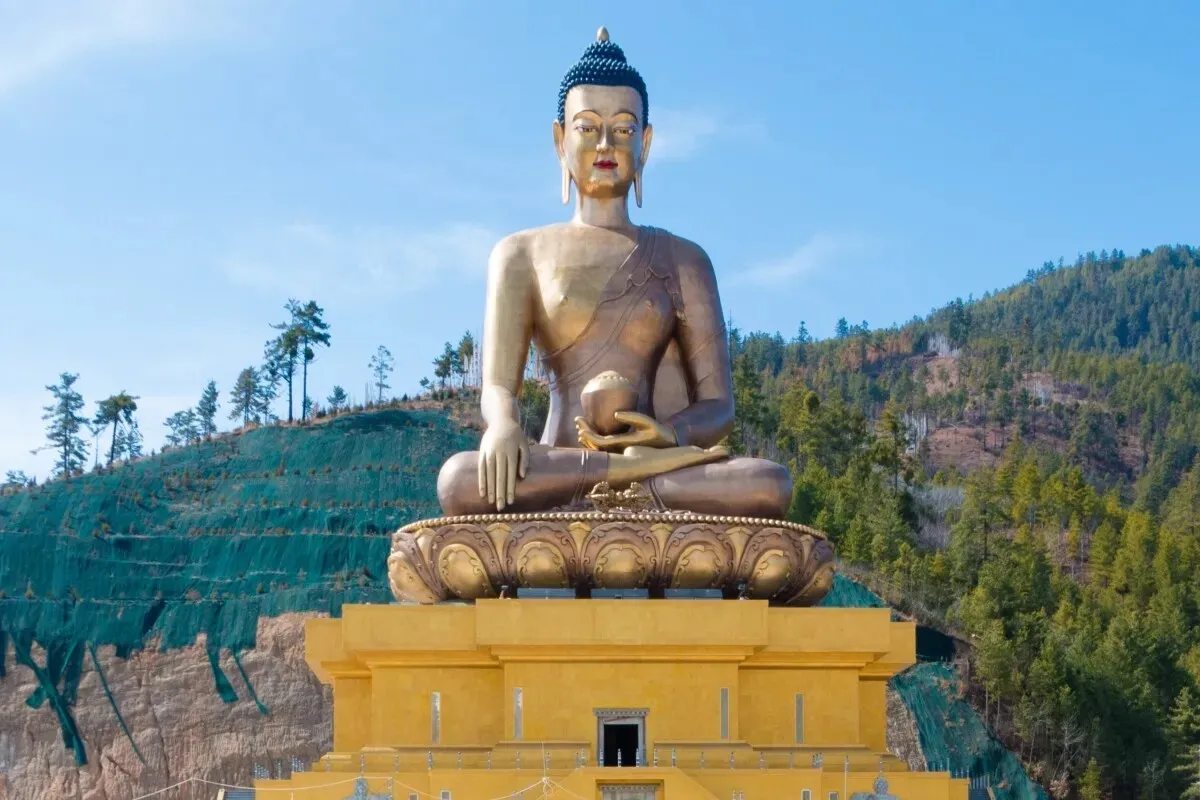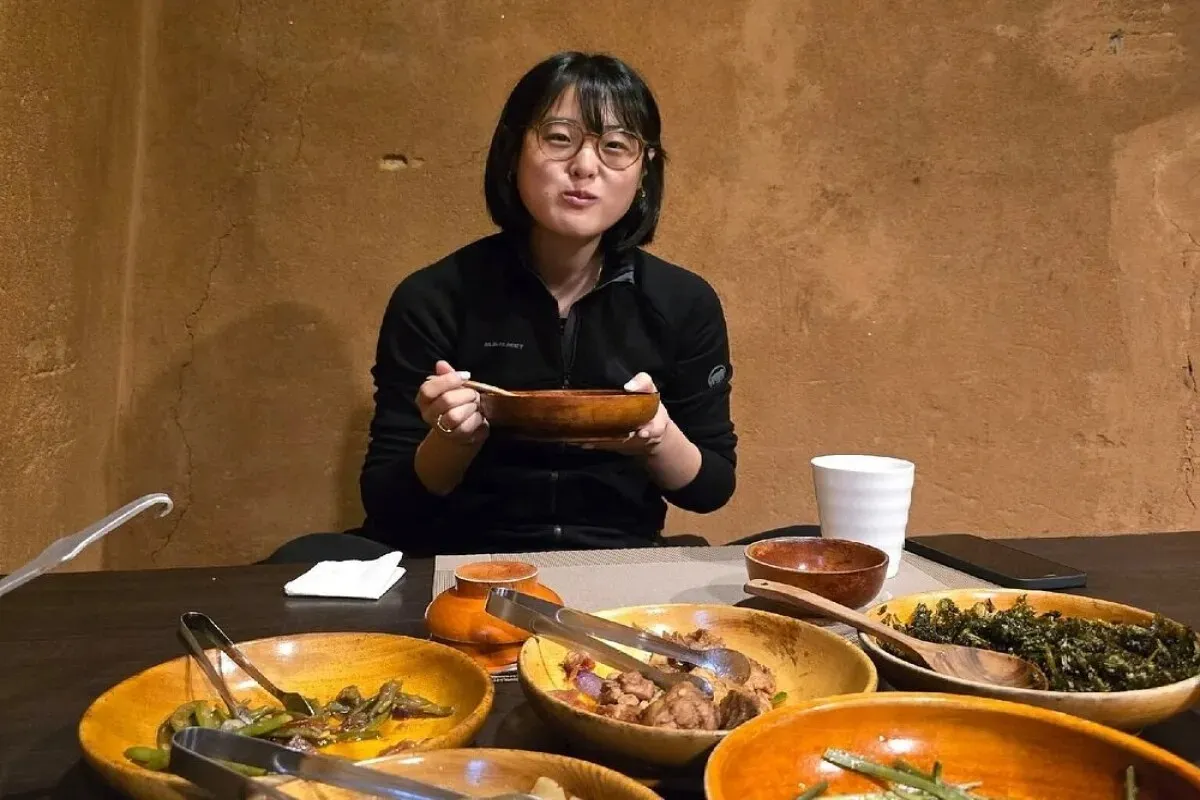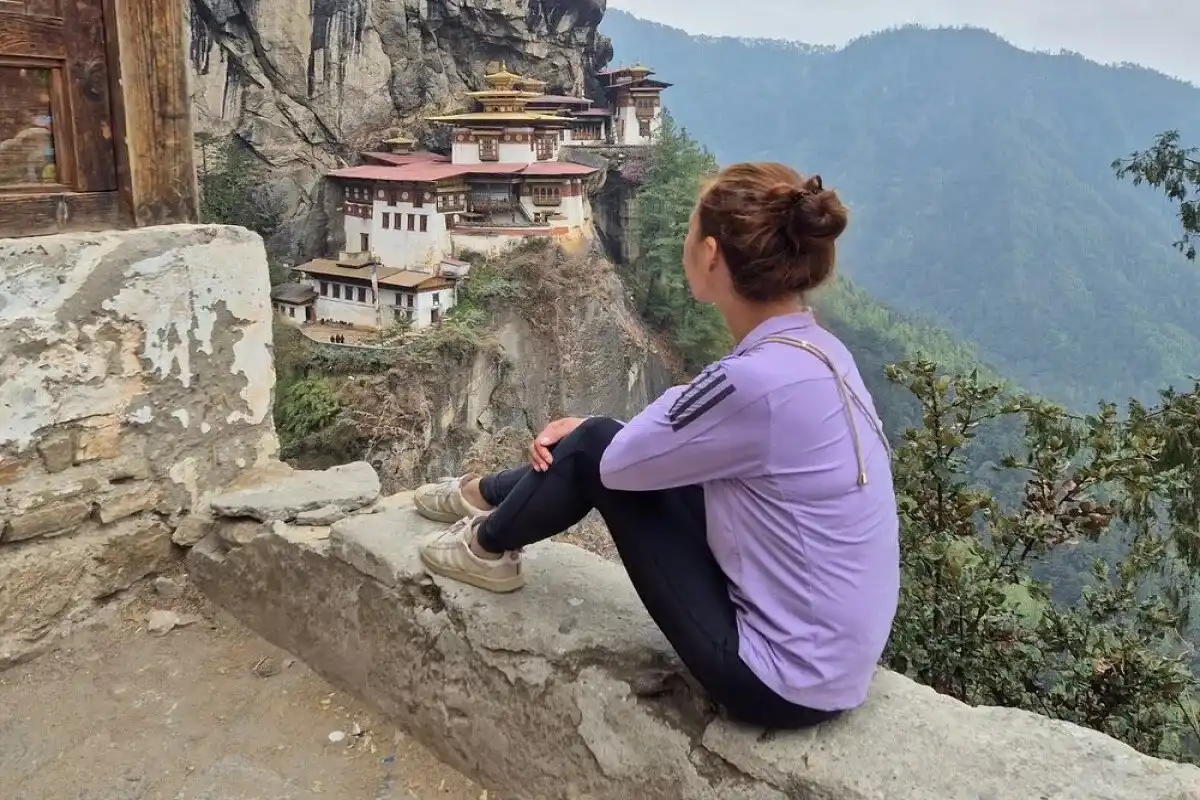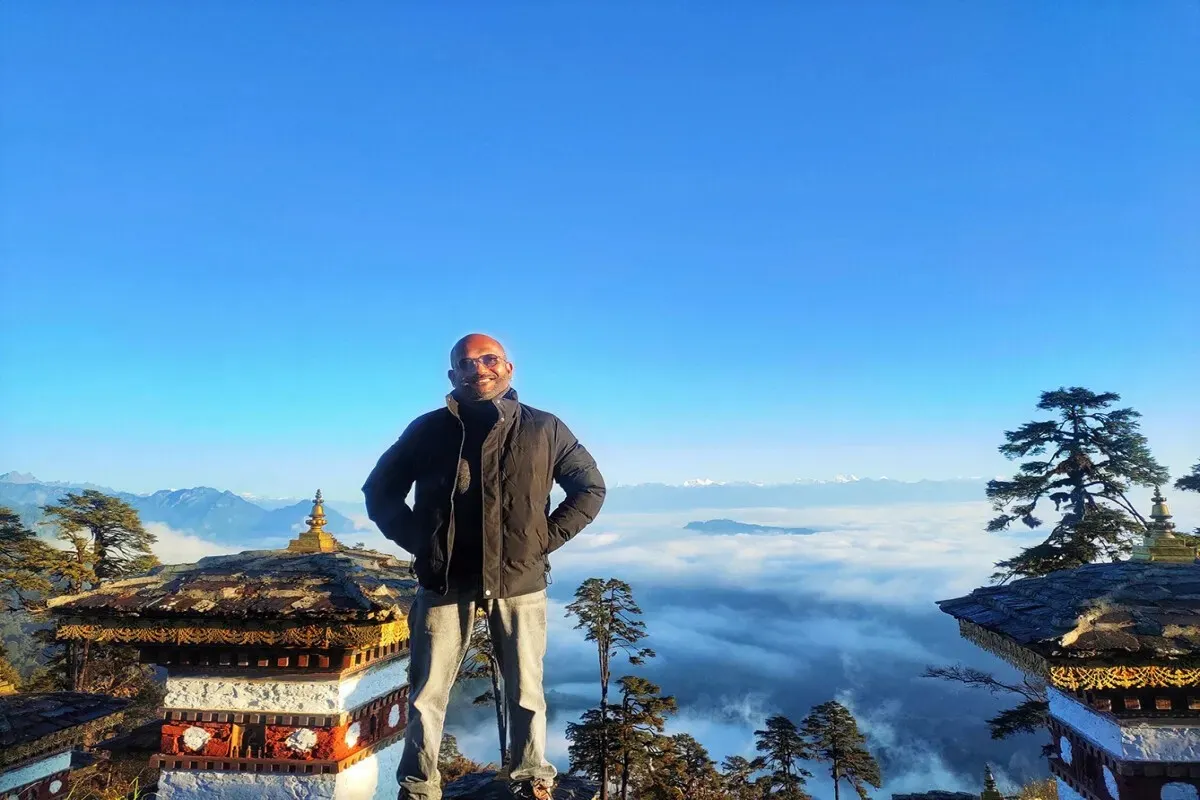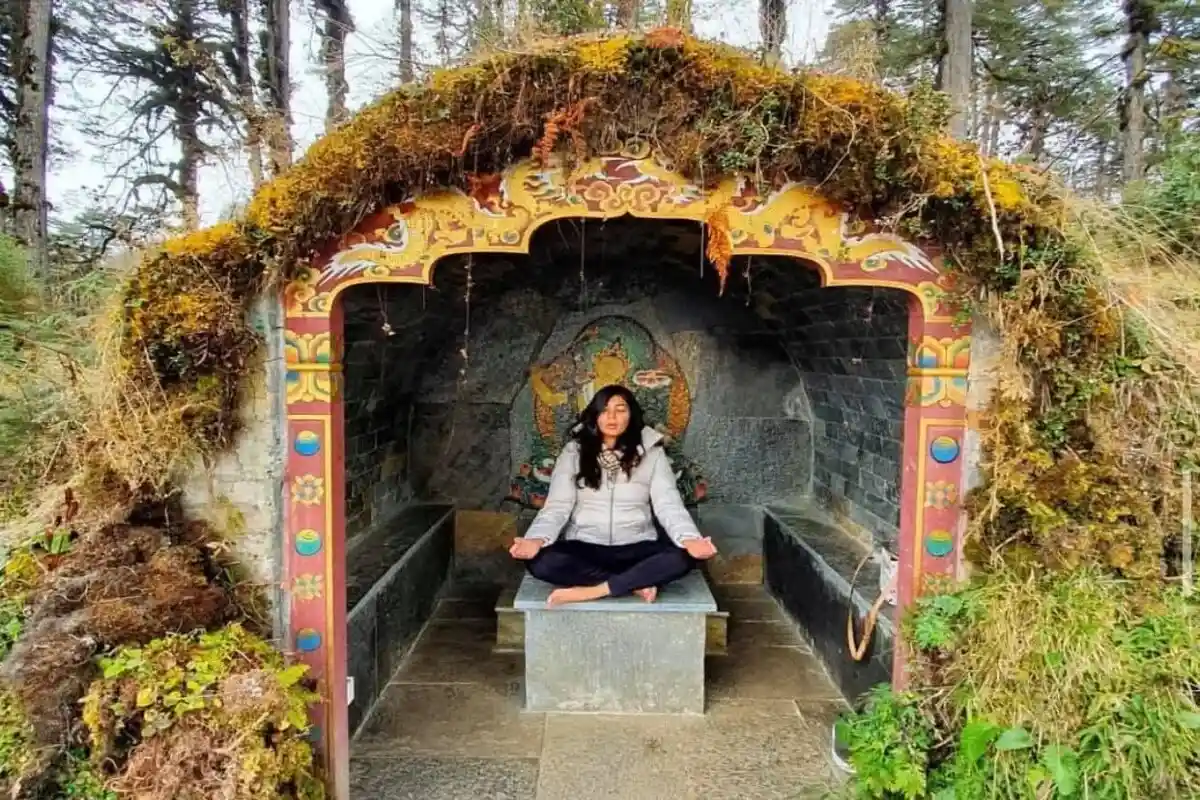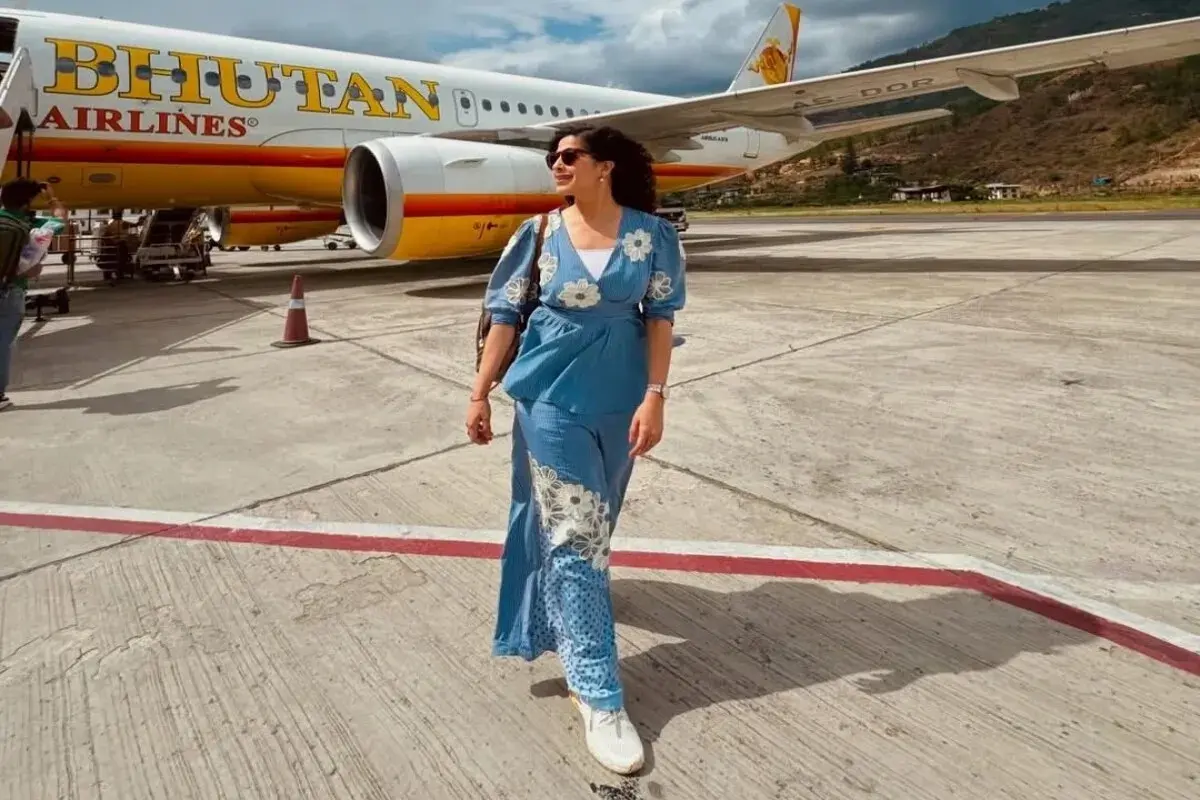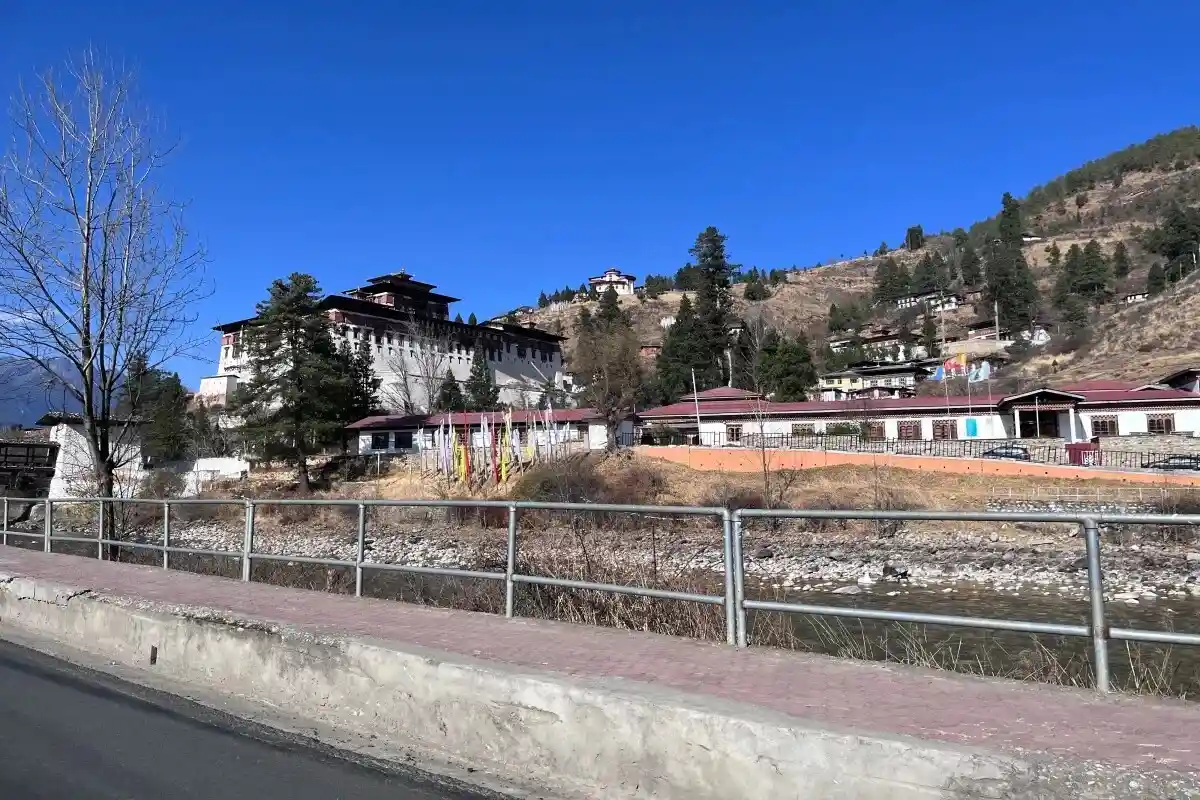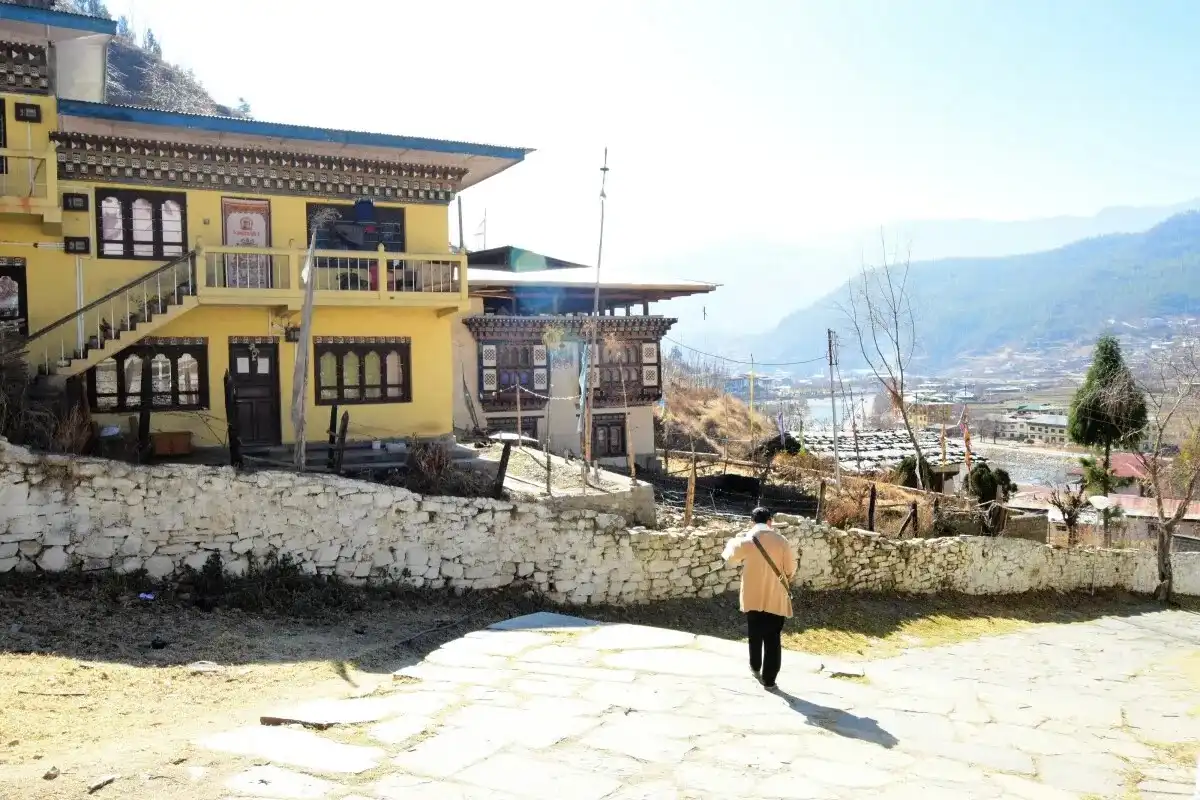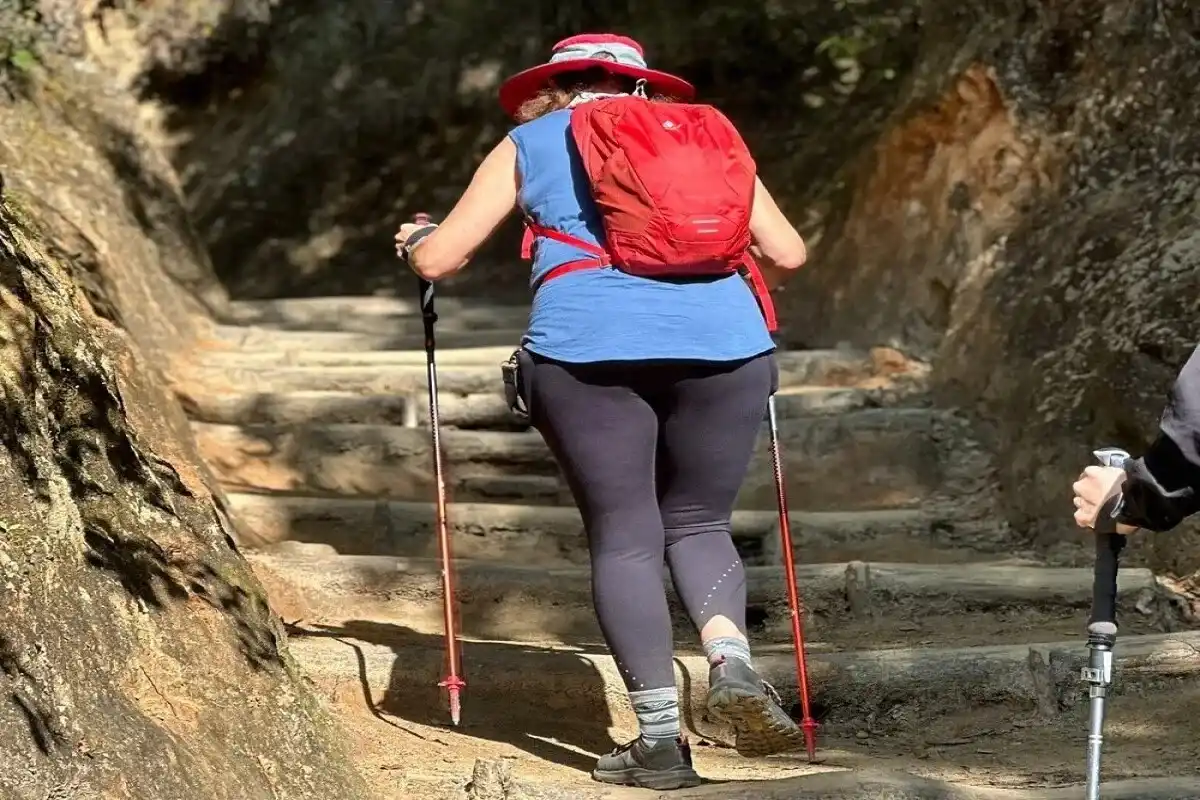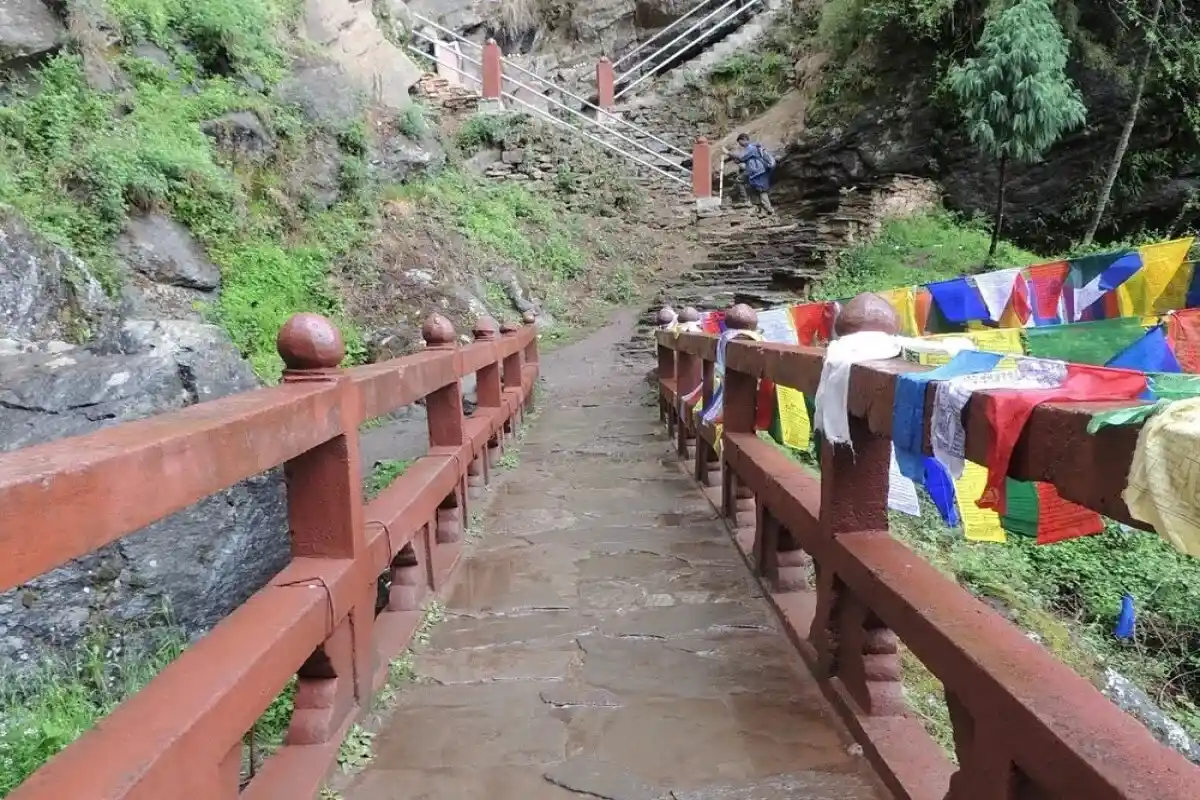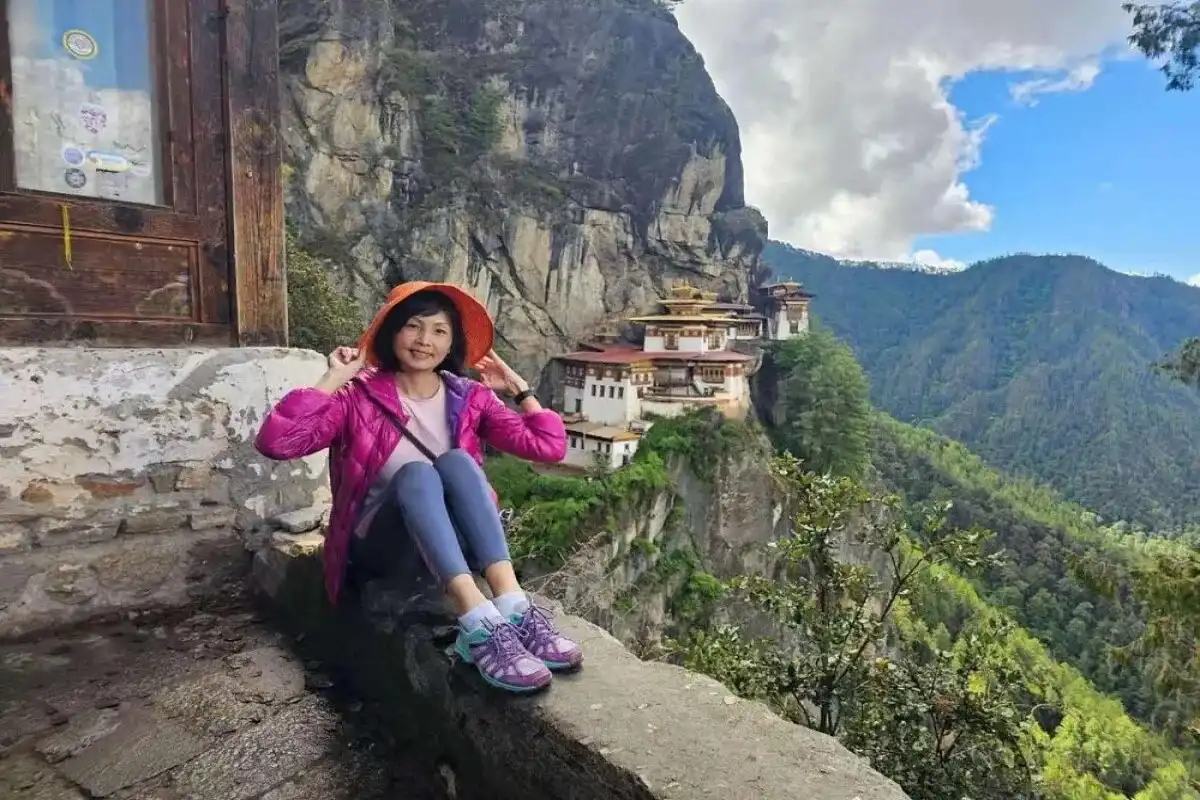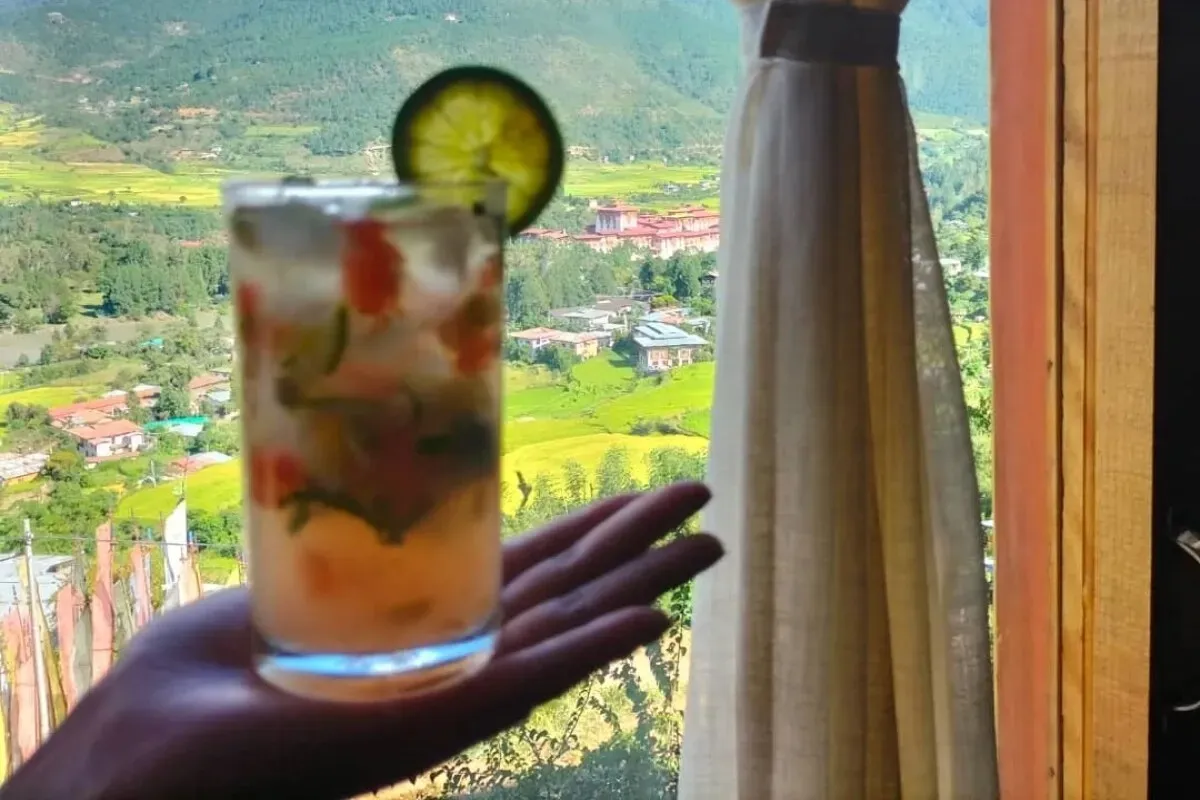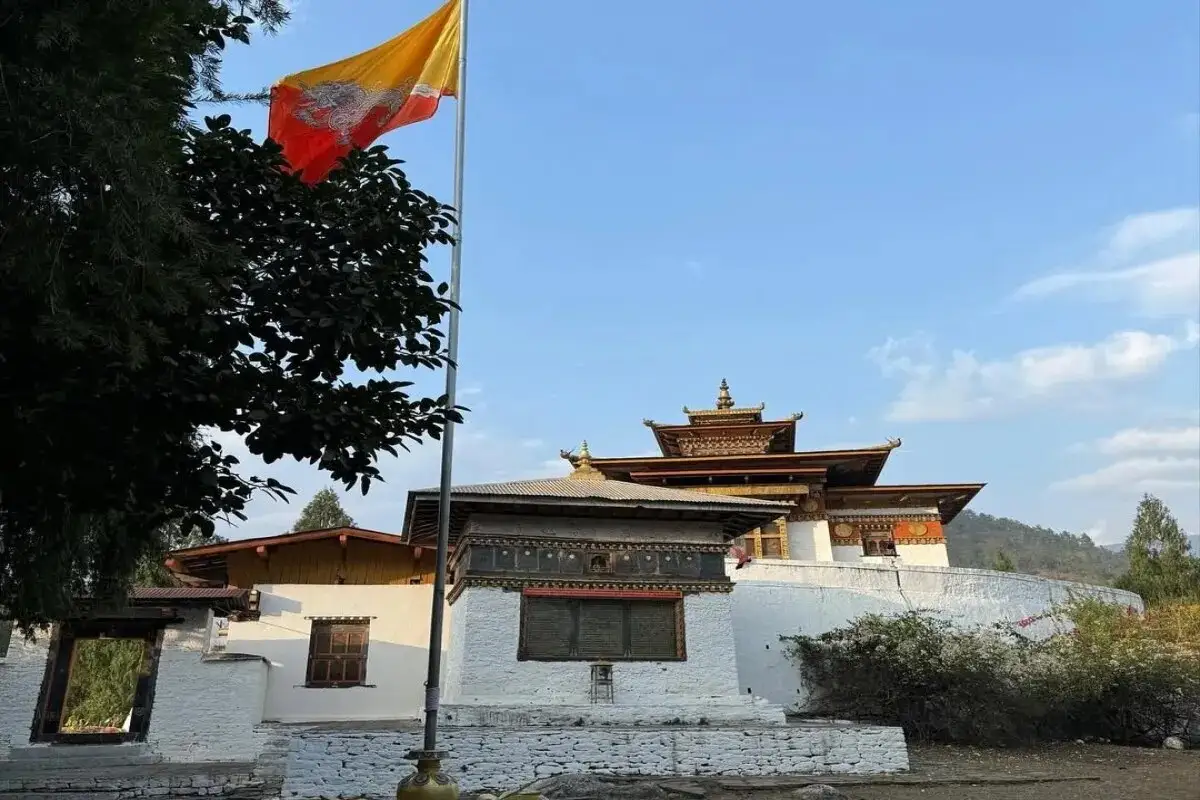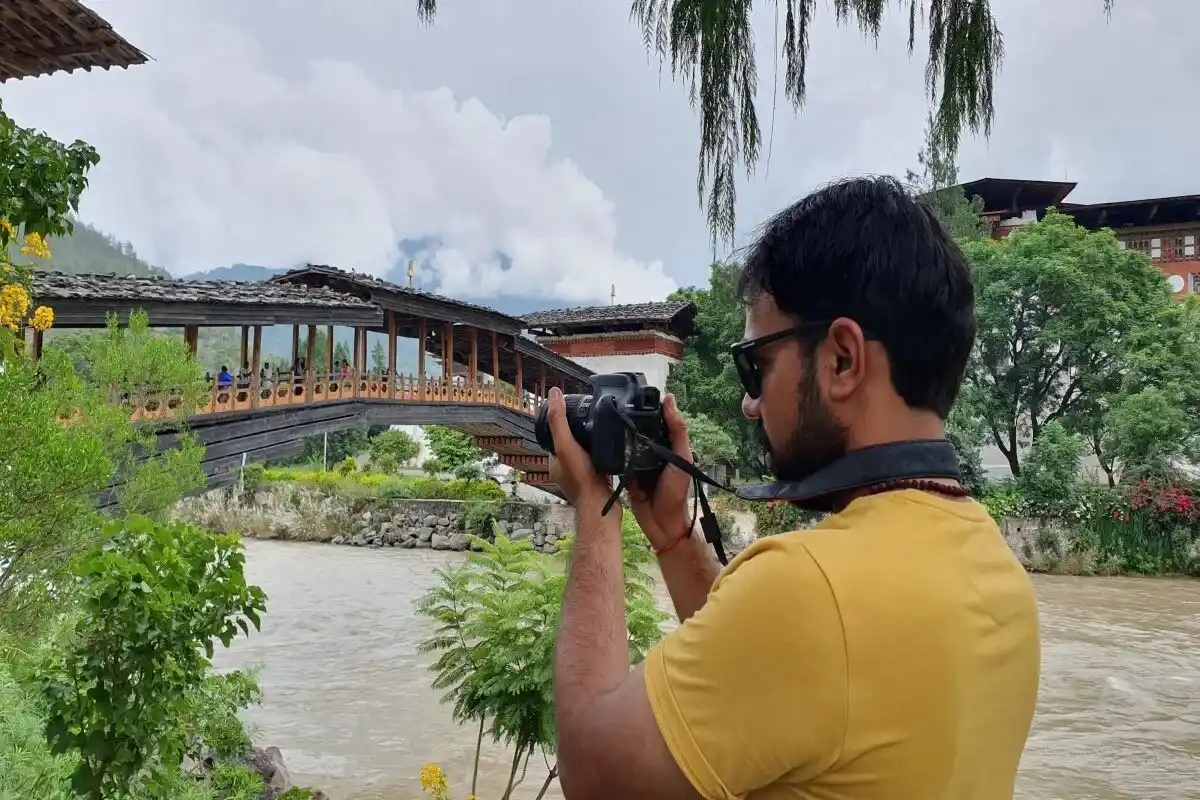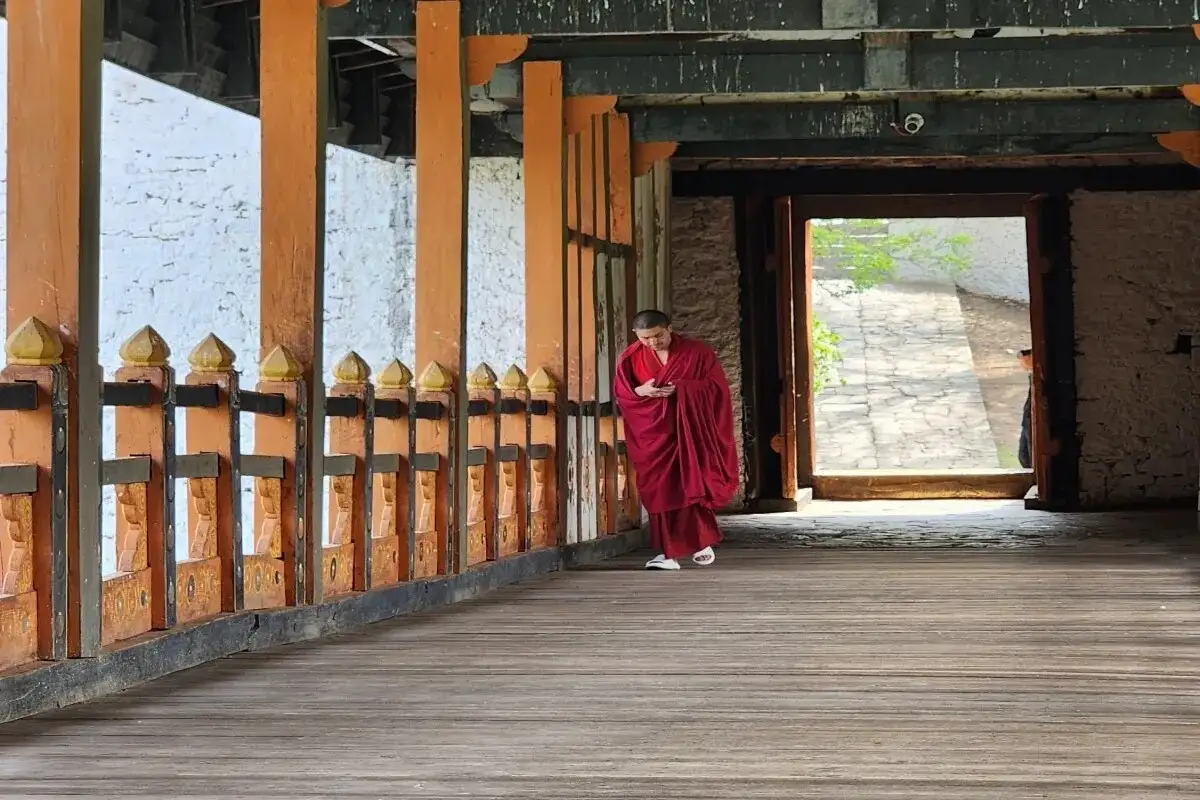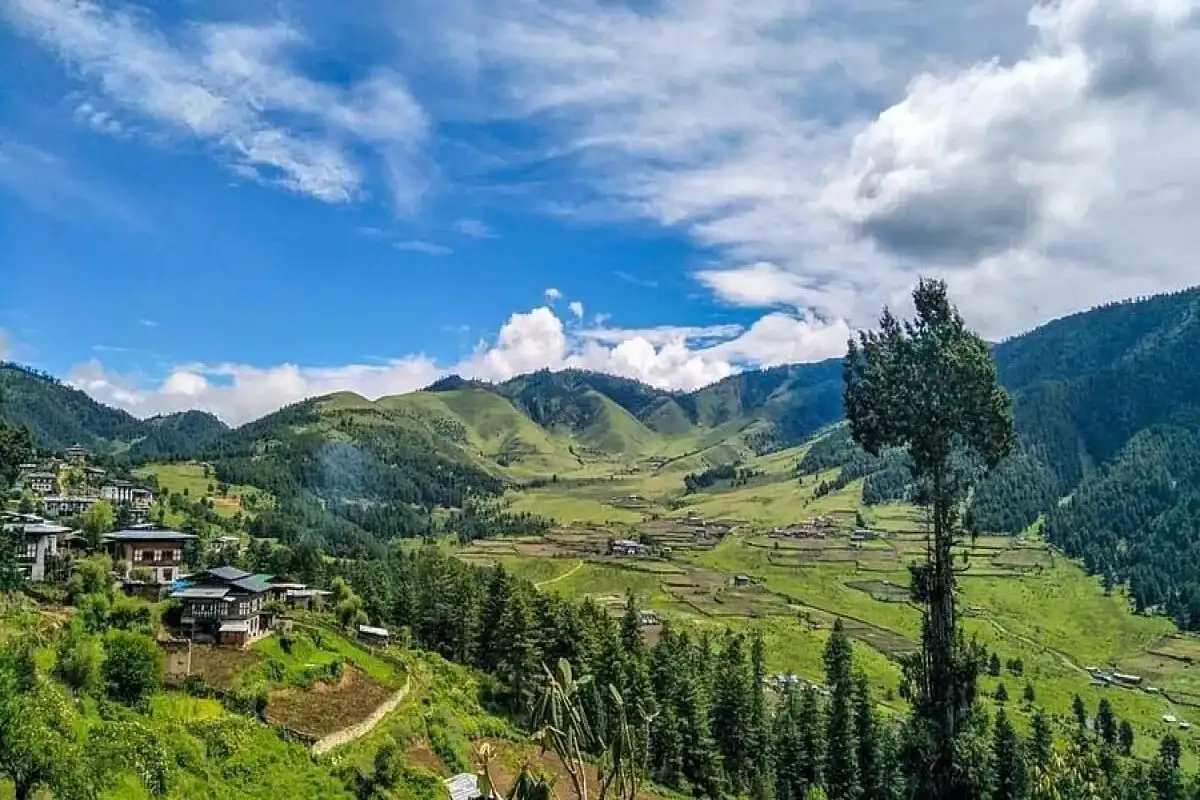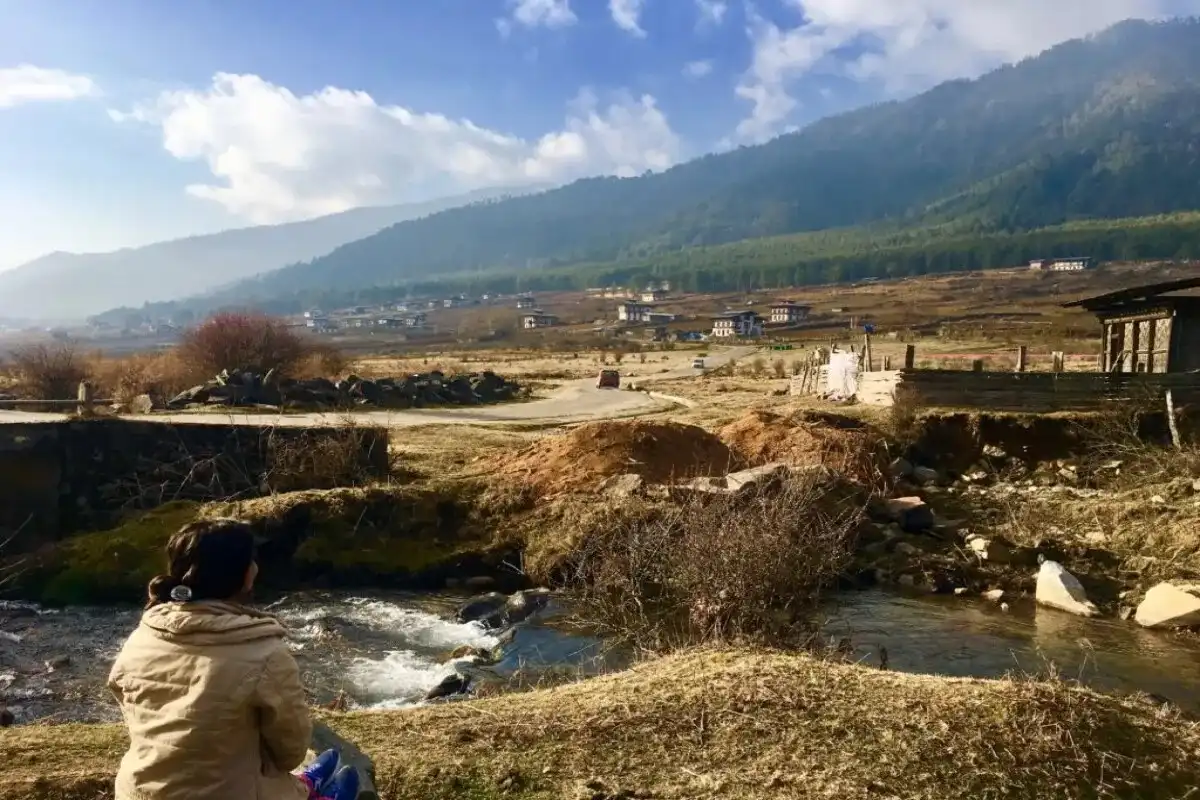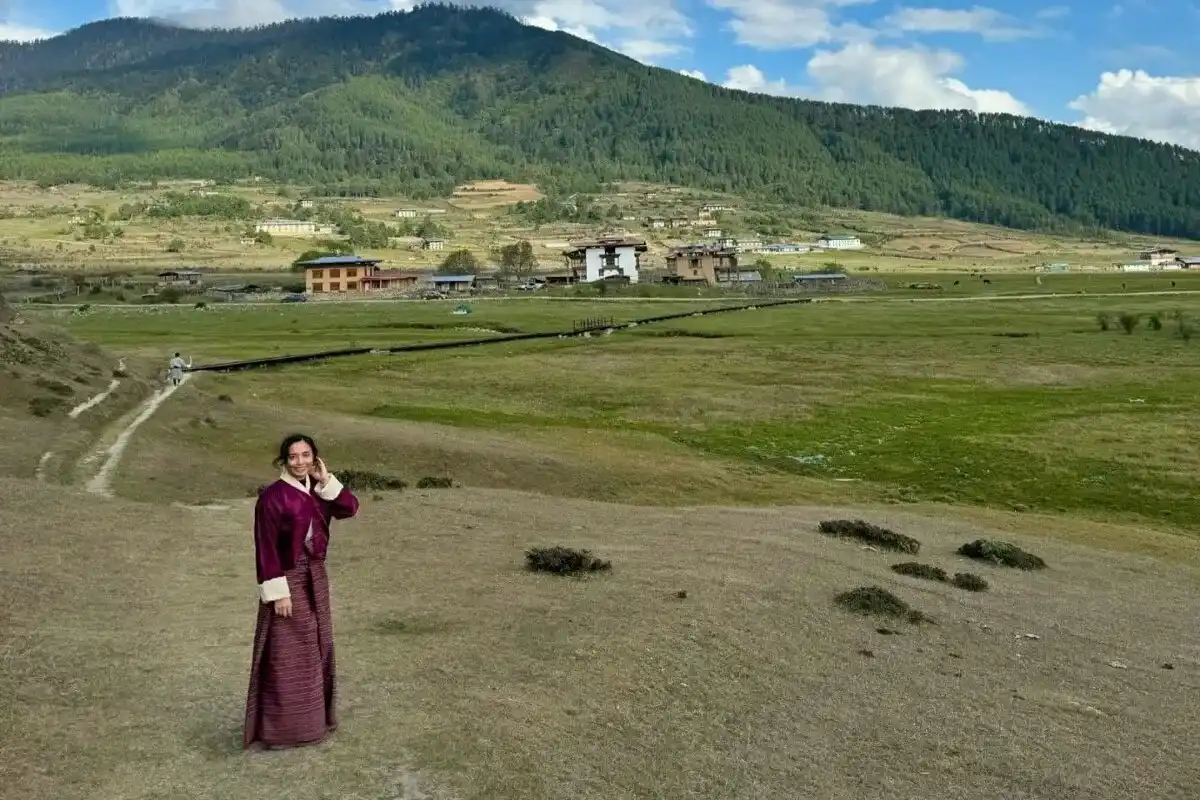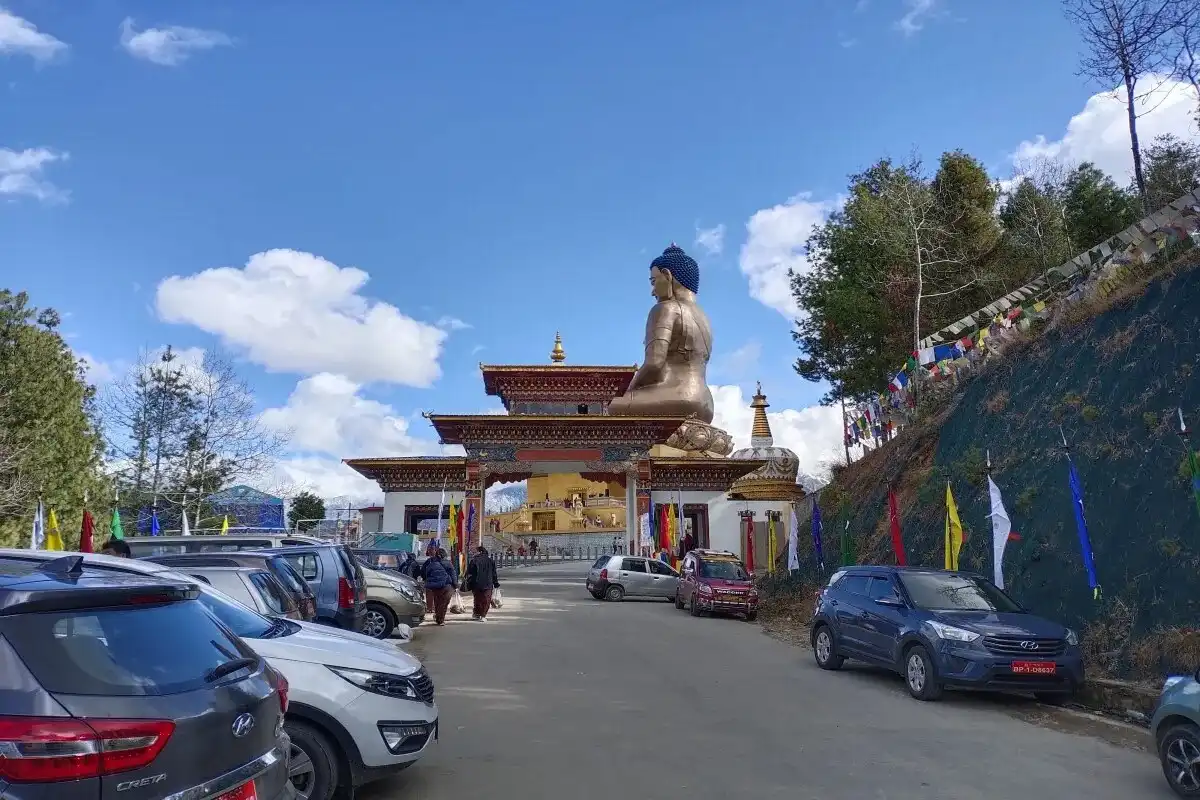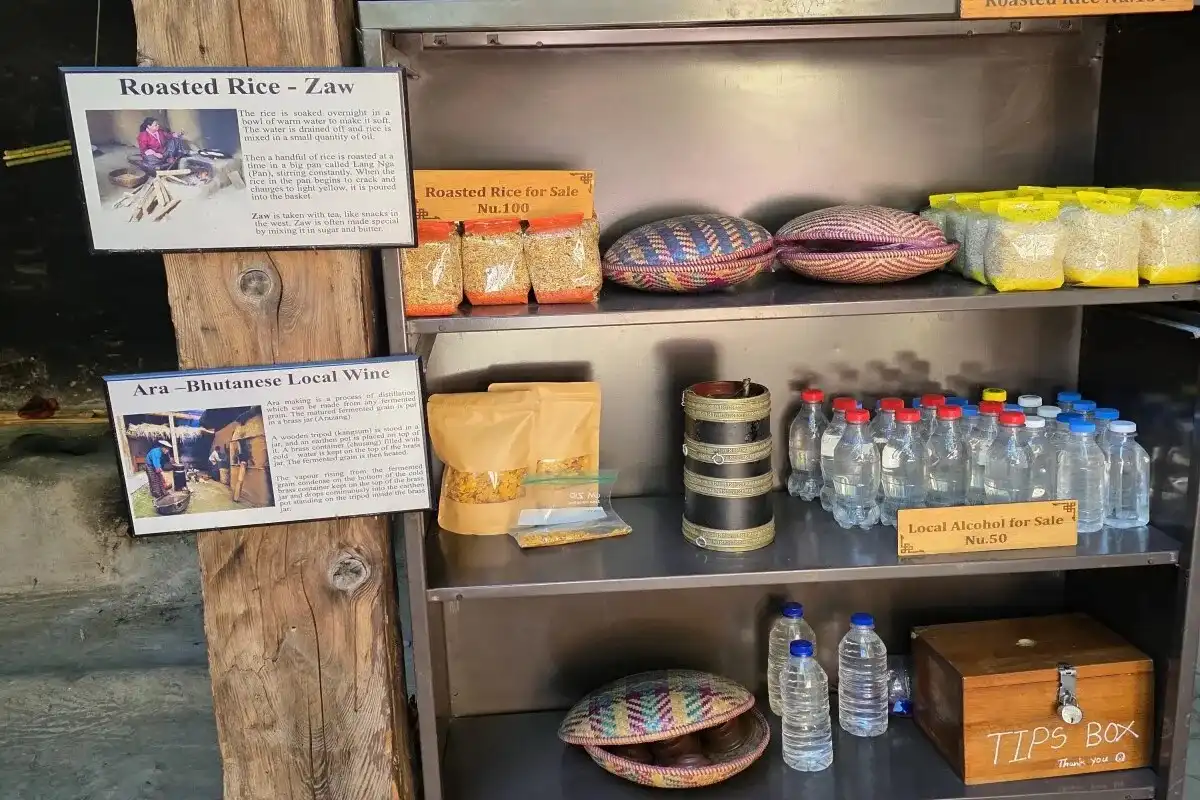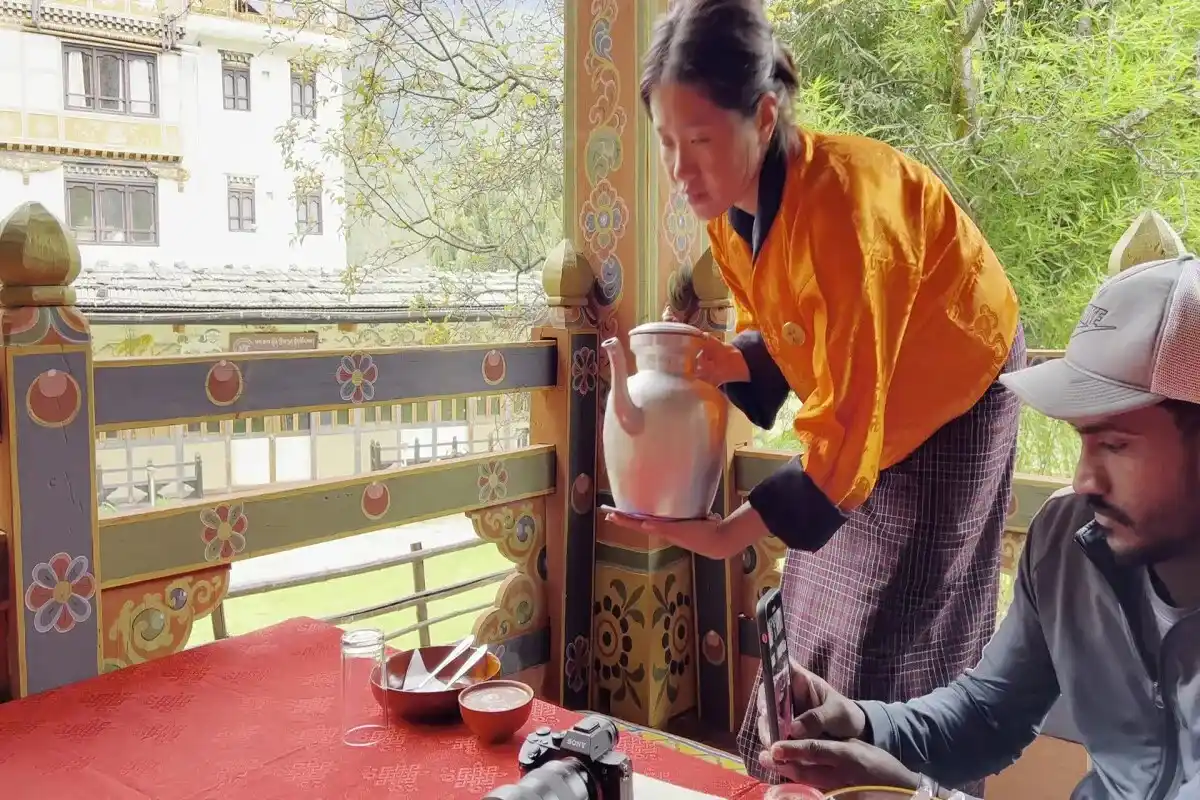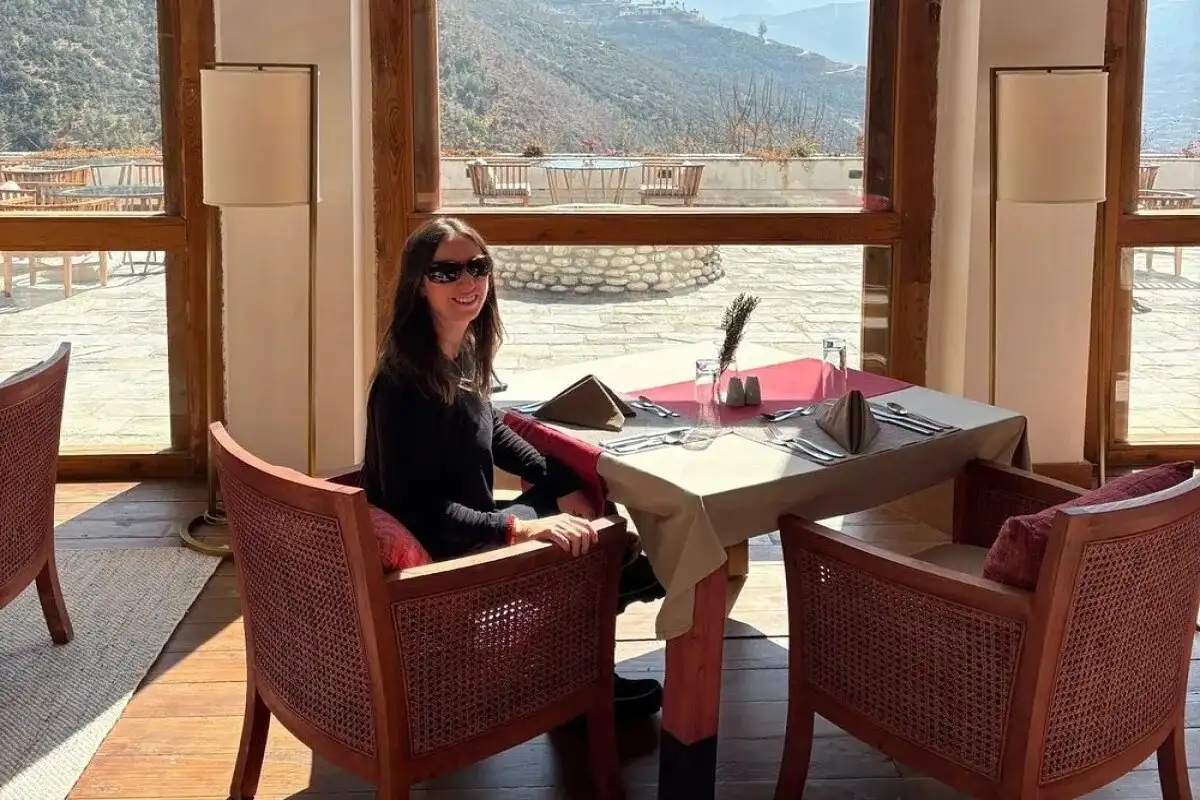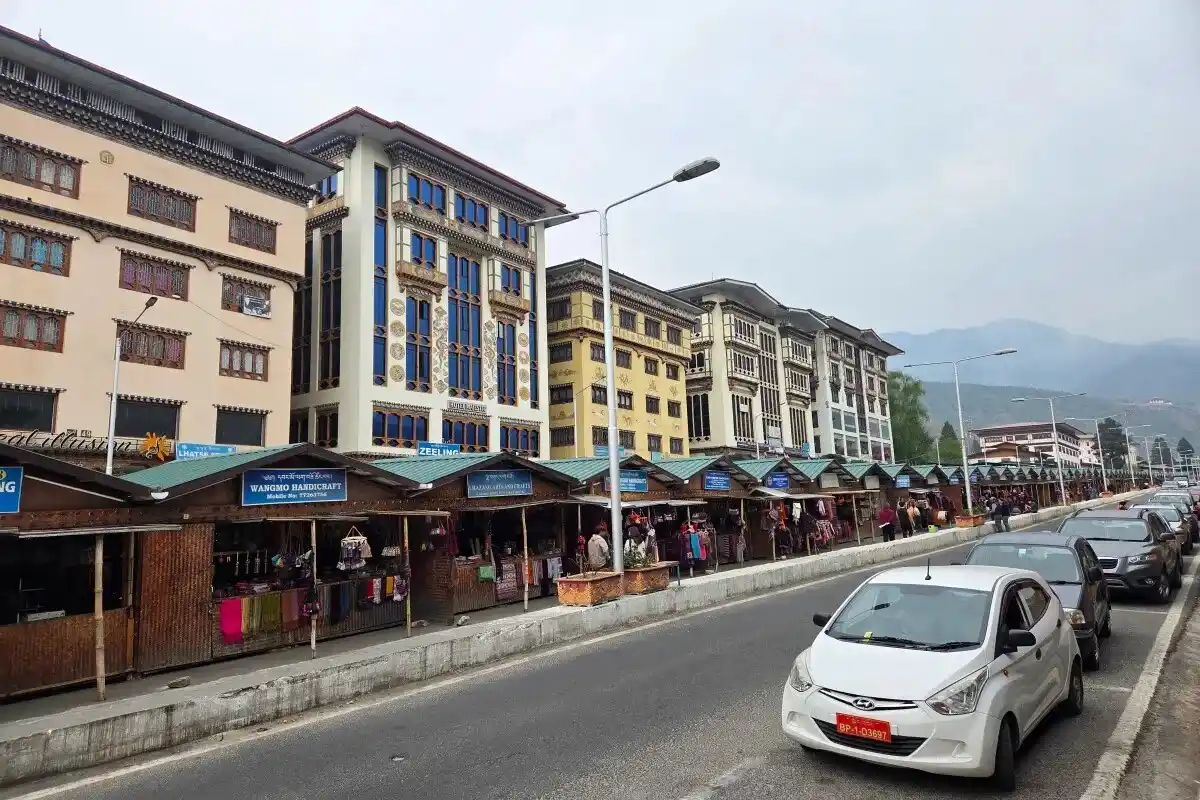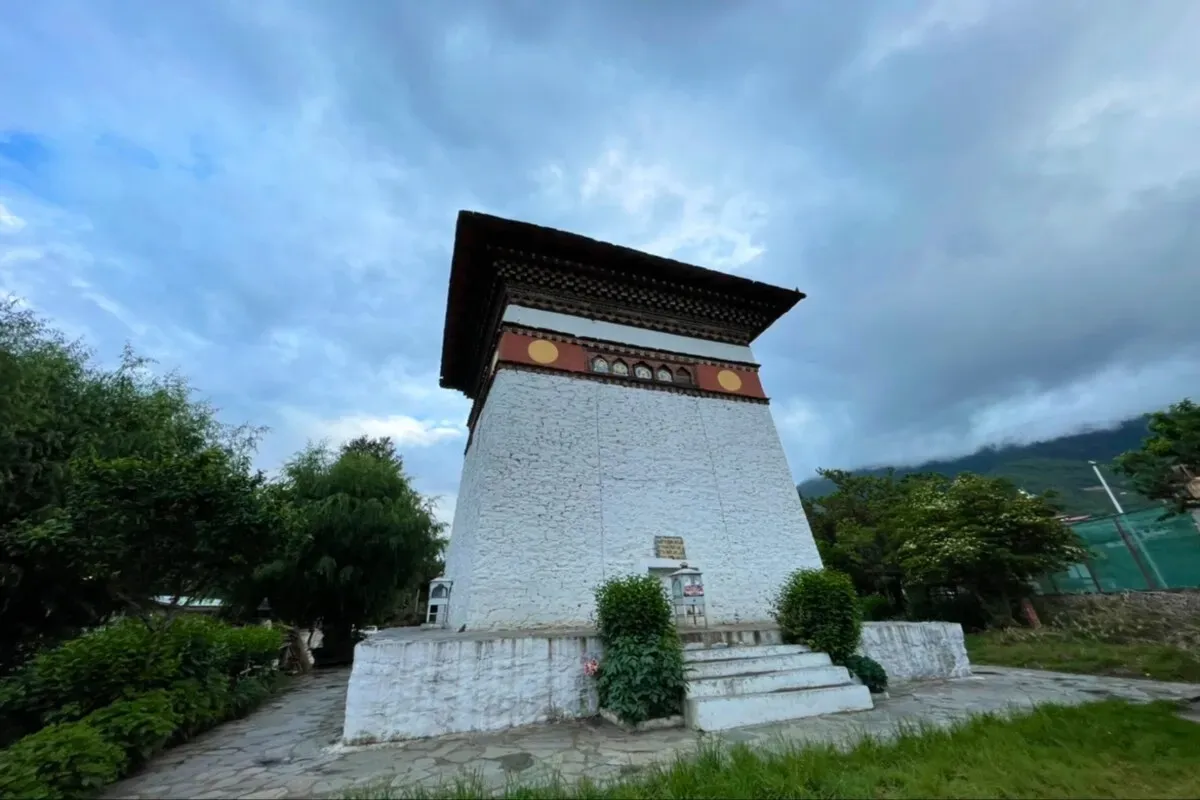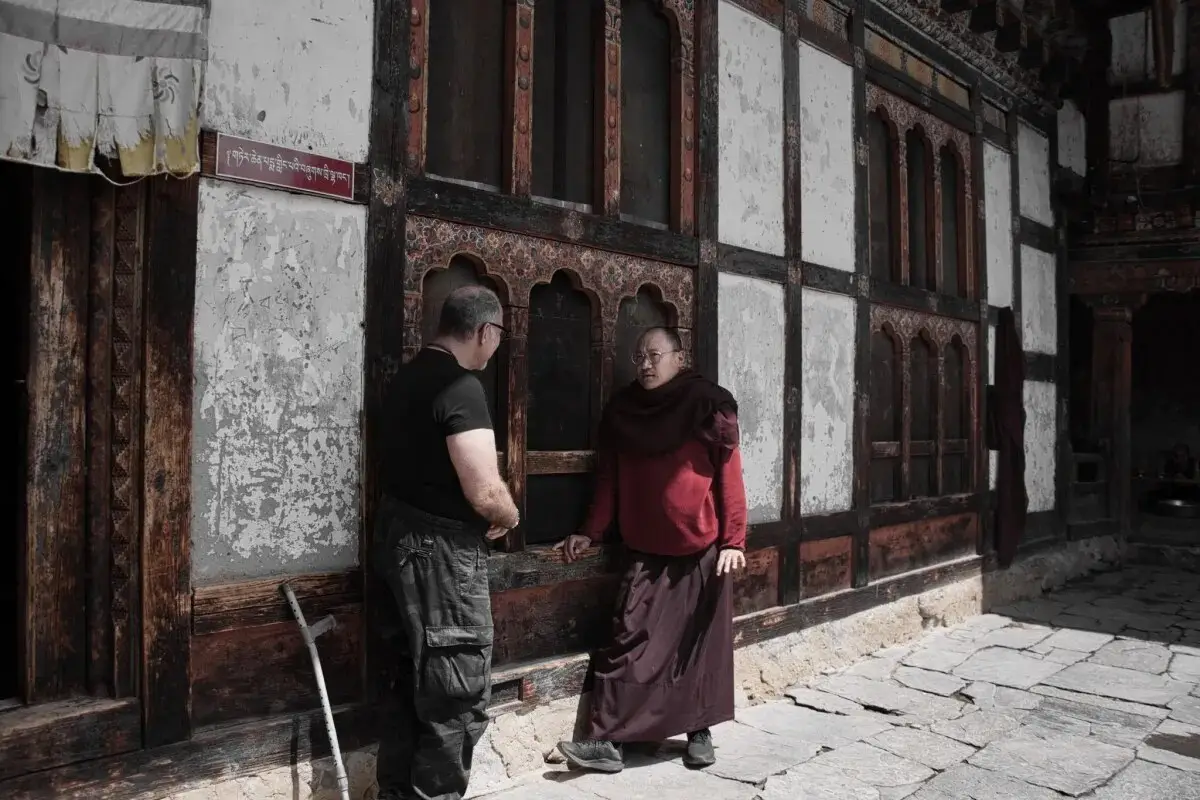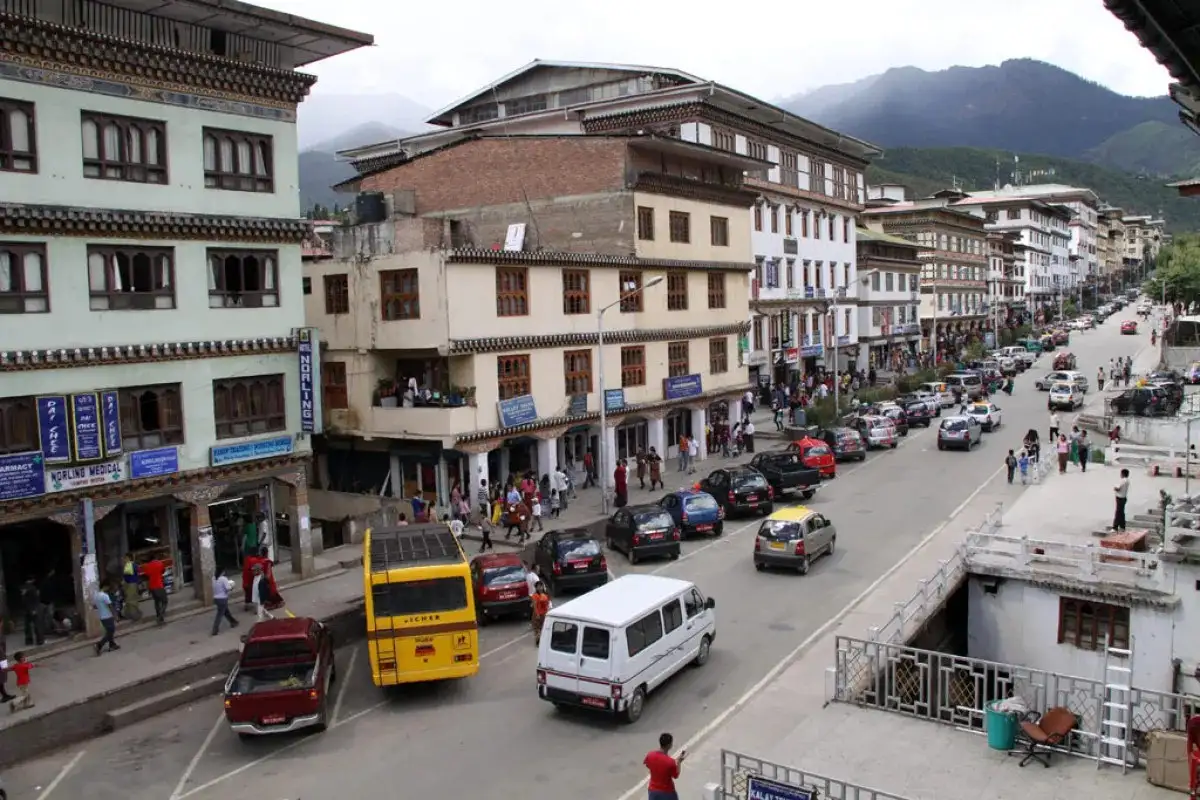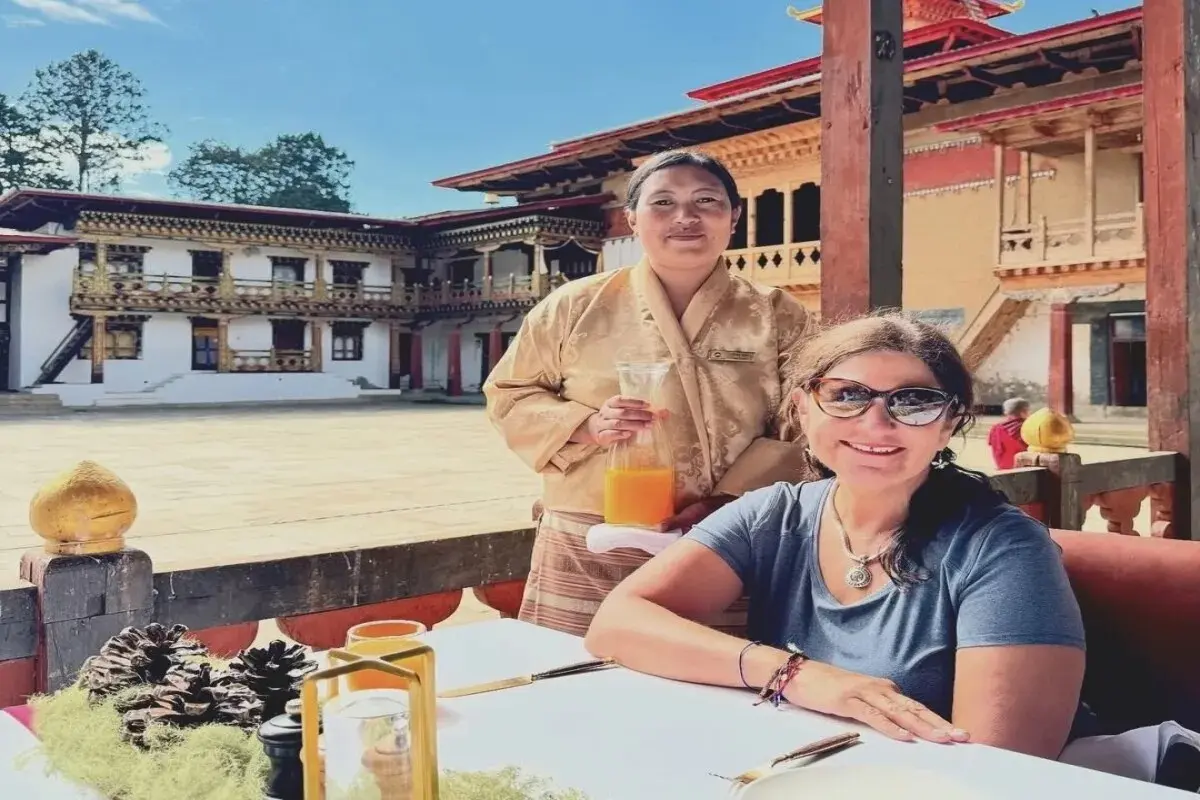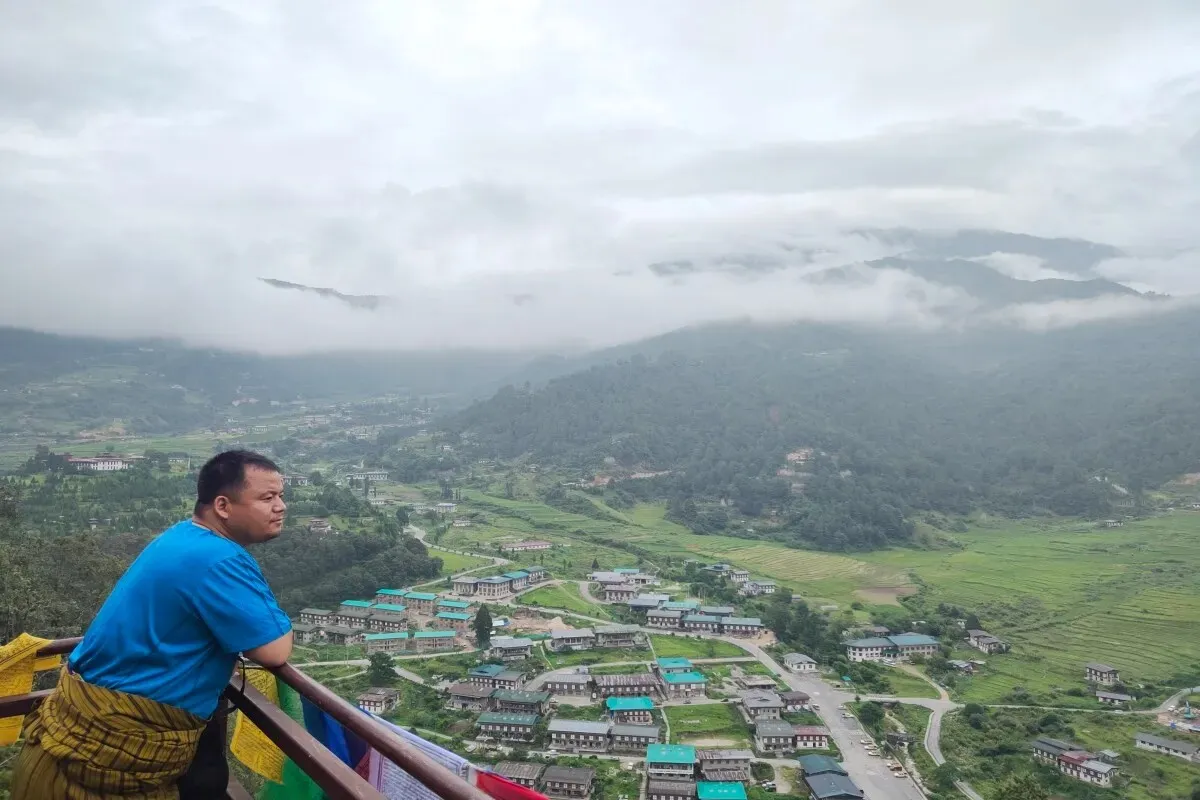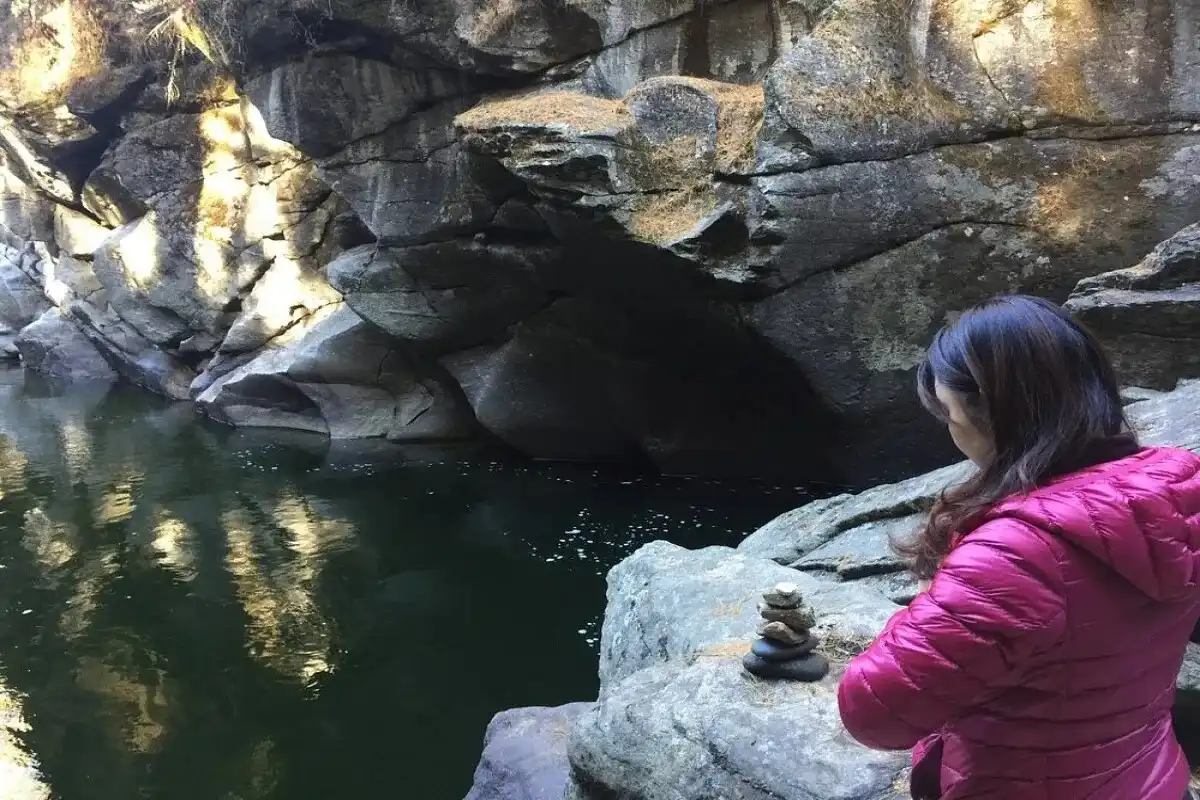Himalayan Serenity of Bhutan:Solo Journey - 7 Days
Bhutan is in the lap of the beautiful Himalayas. The 7-day solo tour in the Himalayan country is just for you to revive your body and mind. The tour takes you to a world of life.
Highlights
- Understanding the traditions and culture of Bhutan
- A Spiritual and Physical Journey to Explore More of Bhutan
- Majestic Himalayan views and a serene site for reflection
- Peaceful nature walk and birdwatching in a glacial valley
- A Surreal Adventure in the Beautiful Dizongs with Riverside Serenity
Trip Overview
Travelling on a tour to Bhutan by yourself is perfect for self-discovery. The eastern Himalayas are the heartland of Bhutan. With the natural environment of Bhutan, anyone can learn to embrace spirituality. Bhutan's natural beauty that it possible to discover ancient monasteries, nature, and an unheard-of way of life. The travel experience allows an opportunity for everyone to learn about the experience of living in Bhutan.
The 7-day solo tour is designed for travellers to experience a different type of travel. Its design will broaden your experiences and way of thinking about travel. The 7 days will consist of exploring all the distinct cultures and heritage of Bhutan. As you travel from Paro to the capital of Bhutan, you will encounter vast scenic landscapes of Bhutan. While this solo tour will not give a sense of loneliness. It will provide an opportunity to realise the freedom of travelling alone. This retreat is a step towards developing new memories and new experiences for you.
Highlights of the trip
During this 7-days solo trip you will get to explore the culture and traditions along with the natural beauty of the Bhutan.
Understanding the traditions and culture of Bhutan
The National Museum of Bhutan and Paro Dzong will be on your travel list. You can explore Bhutan's architecture at Paro Dzong. It has historical religious significance for the country of Bhutan. The National Museum of Bhutan is the repository of Bhutan's arts, a legacy of religious relics, textiles, and ancient weapons. It holds to the beliefs and heritage of Bhutan. To say you will gain a greater sense of understanding of the culture of Bhutan at these two sites would be an understatement. Additionally, you will be touring other Bhutanese religious and cultural places. You can learn many things about Bhutanese spirituality and customs from all of these locations.
A Spiritual and Physical Journey to Explore More of Bhutan
Bhutan has a diverse landscape. Within all those places, there are many spiritual significances hidden. It will be a physical adventure. You can go to different monasteries and dzongs by hiking. The valley can be seen beautifully from these treks. Your hike to Taktsang Monastery (Tiger's Nest) will be the primary highlight of your solo trip. The monastery provides a space for reflection and rest. This is not just a physical activity,also it helps you connect with the nature of Bhutan. It will be an ideal activity for mindfulness and grounding.
Majestic Himalayan views and a serene site for reflection
During the 7-day trip, you will take a stop at Dochula Pass. It provides beautiful views of the eastern Himalaya. It is covered with snow during winter. You'll also be able to explore 108 chortans or stupas. It was built to honour the Bhutanese soldiers. Dochula Pass is more than just a stop for your photo. You can take a moment to build a quiet connection with nature. The place has a beautiful atmosphere, providing you with pure mountain air. You can think back on your outdoor experience and self-awareness during this time.
Peaceful nature walk and birdwatching in a glacial valley
During your trip, you will be travelling to Phojikha Valley. It is also known as Glacial Valley. It has a lovely atmosphere. The endangered black-necked cranes can be found in the Phojikha Valley. These cranes can be noticed during winter. The place is the natural habitat of the cranes. During winter, you will be able to watch these birds. In the valley, you will also be travelling to Gangte Monastery. It lies at the top of Phojikha Valley. The monastery is full of a peaceful ambience and ancient wisdom. There, you can observe monks, spin prayer wheels, and meditate.
A Surreal Adventure in the Beautiful Dizongs with Riverside Serenity
One of Bhutan's magnificent Dzongs is Punakha Dzong. It is situated between the Pho Chu and Mo Chu rivers. The Dzong is surrounded by beautiful trees. It has traditional architecture. It holds immense spiritual and historical importance. Through the courtyard of the Dzong, you will be able to experience different cultures. For solo travellers, the Dzong and the riverside view will be a perfect place to reflect. Additionally, you can visit the neighbouring suspension bridge that overlooks the Mo Chu River. There are stunning views of the valley from there. Both the Dzong and riverside view provides a memorable moment of inner beauty.
Best season for the solo trip
Bhutan has a pleasant climate throughout the year. Travelling to Bhutan is comfortable throughout the year. We would recommend that you visit Bhutan during Spring and Autumn. In spring, you will see jungles of rhododendrons covering mountains and a lot of festivals. During Autumn, adventure tourism is at its peak with tourists visiting to trek. The temperature can range up to -5 degrees Celsius during winter. However, you can enjoy snow and bird viewing during winter. So, if you are considering these periods for a holiday, try getting your Bhutan tour packages in advance.
Conclusion
A solo trip to Bhutan is much more than a trip. It is a calming cleanse for your mind, body, and soul. Your seven-day stay in Bhutan will explore a variety of places. You will feel calm and reflective at every place you visit. Traveling solo in Bhutan creates meaning and starts your life a new with a connection and learn about the people of Bhutan and their everyday lives. The trip is a hybrid of solitude and connection, life-like experiences, and an expansion of your independence. You will have experiences of fresh air and physical liveliness to cherish for life. Visit Bhutan to explore for yourself and experience the wonders of Himalayan peace.
Travelling on a tour to Bhutan by yourself is perfect for self-discovery. The eastern Himalayas are the heartland of Bhutan. With the natural environment of Bhutan, anyone can learn to embrace spirituality. Bhutan's natural beauty that it possible to discover ancient monasteries, nature, and an unheard-of way of life. The travel experience allows an opportunity for everyone to learn about the experience of living in Bhutan.
The 7-day solo tour is designed for travellers to experience a different type of travel. Its design will broaden your experiences and way of thinking about travel. The 7 days will consist of exploring all the distinct cultures and heritage of Bhutan. As you travel from Paro to the capital of Bhutan, you will encounter vast scenic landscapes of Bhutan. While this solo tour will not give a sense of loneliness. It will provide an opportunity to realise the freedom of travelling alone. This retreat is a step towards developing new memories and new experiences for you.
Highlights of the trip
During this 7-days solo trip you will get to explore the culture and traditions along with the natural beauty of the Bhutan.
Understanding the traditions and culture of Bhutan
The National Museum of Bhutan and Paro Dzong will be on your travel list. You can explore Bhutan's architecture at Paro Dzong. It has historical religious significance for the country of Bhutan. The National Museum of Bhutan is the repository of Bhutan's arts, a legacy of religious relics, textiles, and ancient weapons. It holds to the beliefs and heritage of Bhutan. To say you will gain a greater sense of understanding of the culture of Bhutan at these two sites would be an understatement. Additionally, you will be touring other Bhutanese religious and cultural places. You can learn many things about Bhutanese spirituality and customs from all of these locations.
A Spiritual and Physical Journey to Explore More of Bhutan
Bhutan has a diverse landscape. Within all those places, there are many spiritual significances hidden. It will be a physical adventure. You can go to different monasteries and dzongs by hiking. The valley can be seen beautifully from these treks. Your hike to Taktsang Monastery (Tiger's Nest) will be the primary highlight of your solo trip. The monastery provides a space for reflection and rest. This is not just a physical activity,also it helps you connect with the nature of Bhutan. It will be an ideal activity for mindfulness and grounding.
Majestic Himalayan views and a serene site for reflection
During the 7-day trip, you will take a stop at Dochula Pass. It provides beautiful views of the eastern Himalaya. It is covered with snow during winter. You'll also be able to explore 108 chortans or stupas. It was built to honour the Bhutanese soldiers. Dochula Pass is more than just a stop for your photo. You can take a moment to build a quiet connection with nature. The place has a beautiful atmosphere, providing you with pure mountain air. You can think back on your outdoor experience and self-awareness during this time.
Peaceful nature walk and birdwatching in a glacial valley
During your trip, you will be travelling to Phojikha Valley. It is also known as Glacial Valley. It has a lovely atmosphere. The endangered black-necked cranes can be found in the Phojikha Valley. These cranes can be noticed during winter. The place is the natural habitat of the cranes. During winter, you will be able to watch these birds. In the valley, you will also be travelling to Gangte Monastery. It lies at the top of Phojikha Valley. The monastery is full of a peaceful ambience and ancient wisdom. There, you can observe monks, spin prayer wheels, and meditate.
A Surreal Adventure in the Beautiful Dizongs with Riverside Serenity
One of Bhutan's magnificent Dzongs is Punakha Dzong. It is situated between the Pho Chu and Mo Chu rivers. The Dzong is surrounded by beautiful trees. It has traditional architecture. It holds immense spiritual and historical importance. Through the courtyard of the Dzong, you will be able to experience different cultures. For solo travellers, the Dzong and the riverside view will be a perfect place to reflect. Additionally, you can visit the neighbouring suspension bridge that overlooks the Mo Chu River. There are stunning views of the valley from there. Both the Dzong and riverside view provides a memorable moment of inner beauty.
Best season for the solo trip
Bhutan has a pleasant climate throughout the year. Travelling to Bhutan is comfortable throughout the year. We would recommend that you visit Bhutan during Spring and Autumn. In spring, you will see jungles of rhododendrons covering mountains and a lot of festivals. During Autumn, adventure tourism is at its peak with tourists visiting to trek. The temperature can range up to -5 degrees Celsius during winter. However, you can enjoy snow and bird viewing during winter. So, if you are considering these periods for a holiday, try getting your Bhutan tour packages in advance.
Conclusion
A solo trip to Bhutan is much more than a trip. It is a calming cleanse for your mind, body, and soul. Your seven-day stay in Bhutan will explore a variety of places. You will feel calm and reflective at every place you visit. Traveling solo in Bhutan creates meaning and starts your life a new with a connection and learn about the people of Bhutan and their everyday lives. The trip is a hybrid of solitude and connection, life-like experiences, and an expansion of your independence. You will have experiences of fresh air and physical liveliness to cherish for life. Visit Bhutan to explore for yourself and experience the wonders of Himalayan peace.
Short Itinerary
Arrive in Paro, visit Paro Dzong & National Museum, enjoy traditional welcome dinner
Hike to Tiger’s Nest Monastery with scenic views and spiritual blessings
Drive to Dochula Pass for Himalayan views, continue to Punakha for overnight stay
Visit Punakha Dzong, riverside walk, explore local villages and travel to Phobjikha
Visit Gangtey Monastery, enjoy nature walk and experience rural Bhutanese life
Travel to Thimphu, visit Buddha Dordenma, Memorial Chorten and Folk Heritage Museum
Morning stroll in Thimphu, return to Paro and depart from Bhutan with lasting memories
Himalayan Serenity of Bhutan:Solo Journey Itinerary
You will arrive at Paro International Airport. A guide will receive you at the airport and welcome you with Khadas. You will be taken to your hotel, where you will check in. You can take a short rest, and then you will go on a journey around Paro. You will visit Paro Dzong. It is a beautiful fortress monastery. Then you will head to the National Museum of Bhutan. There, you can learn a little bit more about Bhutan. You’ll be able to view the beautiful Valley views. Later, you have the opportunity to rest in your hotel and relax from the day’s journey. Then you will spend the evening with a traditional Bhutanese welcome dinner that will feature various local dishes and will offer a true experience of Bhutanese hospitality.
You would begin the day early in the morning. Then you can enjoy a delicious Bhutanese breakfast made from local ingredients. Then you will start the hike. You will go on a solo hike to Tiger's Nest. It is a famous hiking path in Bhutan. The Monastery is on a cliff, and below it is the Paro valley.On the way, you can enjoy the beautiful greenery covering the landmark. On reaching the top of Tiger’s Nest, you can explore the cave and monastery and also seek blessings from monks in the monastery.
Following your hike, you can eat at a local restaurant. Likewise, you can get through the day by heading back to your place, and you could get under the hot stone that is going to refresh and relax your body.
You start your day with an early breakfast. Then you'll go from Paro. You will be going to Punakha. Dochula Pass will be your stop along the route. 3,100 meters is the elevation of the pass. Tourists are primarily drawn to the pass by its 108 stupas. This pass is a must-see because of the stupas as well as the expansive view of the Himalayan mountain ranges that is available. It will be ideal for one's soul-searching here.
After the day is over, you will be brought to your lodge. After that, you can have some rest and take in Punakha's tranquility.
The serene surroundings of Punakha Valley will greet you as the day begins. You will explore Punakha after breakfast. The beautiful Punakha Dzong will be your first stop. The Palace of Great Happiness is another name for it. It is situated between two rivers. The architecture of the Dzong is stunning. The enormous fortress is open for exploration.
After this, you'll head to the Mo Chhu River. You can walk along the riverside. You will be able to enjoy the peace of the river. You will explore the Punakha local villages in the evening. You may see how Bhutanese people live their daily lives there. Some of the traditional houses that encircle the Punakha Valley will be visible to you. Then you will head to Phobjikha.
You will travel to Phobjikha with a view of the sunrise. It will take roughly four hours to make the drive. You will be able to see serene valleys and lovely rivers. You'll go along picturesque mountain routes. You will check into your hotel once you arrive in Phobjikha. You will next proceed to the Gangtey Monastery. It is among Bhutan's oldest monasteries. The monastery is situated in the Phobjikha Valley on top of a tiny mountain. It provides a stunning views of Phobjikha. While in the monastery, you can investigate crafts and spiritual importance. A significant hub of religious Buddhism, Gangtey Monastery symbolizes the religious facts of Bhutanese culture. Following the visit, you can experience Bhutanese village life. You can enjoy a quiet nature walk and engage in solitude amidst the valley's beauty.
Your day will start early in the morning, and then, you will head to Thimphu. You will first visit the Buddha Dordenma. You will glimpse the goddess of love and kindness as you get closer to Buddha Dordenma. It is one of the beautiful statues of Buddha. Following that is the Memorial Chorten, a fascinating location where residents of Thimphu gather for prayer. You will have the opportunity to visit Bhutan's sacred sites.
You will then proceed to the Folk Heritage Museum. This location features a number of exhibits that tell Bhutan's history. You will be given a tour of the nation's history. You can visit neighborhood stores in the evening to browse for trinkets and crafts. The day will be a calm and reflective experience
Enjoy your breakfast with a beautiful view of Thimphu on your last day. You can take a walk in Thimphu. You will have a lot of mementos to bring home. You can also visit the nearby temple in Thimphu by taking a quick stroll. After that, you will leave your accommodation and travel to Paro Valley. You're going to Paro International Airport with this. You will receive the greatest hospitality when you depart. You will be able to capture experiences and memories on the way home.
Know Before You Travel
-
A cultural exploration:
Bhutan has varying types of festivals as well, and the lives of the people find themselves surrounded by Bhutanese culture and rituals. You will experience this culture each day of your journey. With each festival, you will look at the significance the culture places on daily life. With each festival or experience, one develops a better understanding of the rich culture found in Bhutan. From Dzongs to monasteries to the beautiful valleys you pass through, each offers varying notions of culture, which provide inner peace and a better understanding of the cultural roots of Bhutan.
FAQs for Himalayan Serenity of Bhutan:Solo Journey
This tour is suitable for all people. But it is especially suitable for individuals who are looking to experience different adventures. The minimum age will be 16 years old, as you are travelling alone. If you are looking for physical and mental rejuvenation, then this tour is perfect for you.
Yes, there will be an experienced guide. The guide may not be present throughout the tour. But you can change the guide according to your needs. The trip is safe and you will be guided by professional guides.
Bhutan is a safe country. All the people are very friendly and humble.Our travel agency is planning this trip and will address any safety concerns. We will make sure the trip is safe.
You are free to change your plans. Kindly let us know the activity you would want to take part in. The relevant itinerary details will be made with this.
The tour won’t be draining. The tour includes light activities like walking to monasteries and museums. The main activity is hiking. So make sure you bring comfortable gear. However, if you have any physical pain or if you are tired, you can take a hot stone bath or book a wellness session.
You need a visa and all necessary permits for your trip. These documents can not be received on the day of your arrival, so they must be processed before coming here. After you book a trip with us, we will manage these papers for you. Your Bhutan visa is arranged by Orrog as part of the package.
The main way to come to Bhutan is through Paro International Airport, which is well-connected to cities like Bangkok, Delhi, Kathmandu, and Singapore. Most people arrive by air, but if you plan to come via road, you can enter through Phuentsholing, located on the southern border with India, which is the most commonly used entry point.
It is recommended to apply for the visa at least 20 days before your planned departure date so that there is enough time for processing your Bhutan visa, finalizing your itinerary, and arranging your guides and transportation. Although visa processing itself is relatively fast once payment is received, early preparation helps avoid delays and ensures availability, especially during peak seasons (spring and autumn).
You don’t require a passport-size photo for the visa, but it is wise to carry at least 2–4 recent passport-sized photographs during your trip. These may be needed for local permits, registration, or when applying for a local SIM card upon arrival in Bhutan.
Yes, you can lengthen your stay in Bhutan either before or after your trip. Bhutan’s tourism model requires visitors to pay a Sustainable Development Fee (SDF) and a daily package cost, so any extra days will involve additional charges. Extensions are a great opportunity to explore cultural sites in Paro, Thimphu, or even add another short trip or day hike.
Yes, Bhutan requires full tour payment in advance before your visa can be processed and issued. The government of Bhutan regulates this policy to ensure that all travel arrangements are confirmed through a licensed Bhutanese tour operator. We are a licensed tour operator that ensures you have everything you need for a trouble-free trip.
Any personal expenses are not covered in the package like:
- Tips for your guide and other staff
- Bottled drinks and snacks(personal expense)
- Souvenirs or local crafts
Credit cards are easily accepted in major cities like Paro and Thimphu. But in remote areas, you may not have access to a card or an ATM. So, it is best to carry some cash before heading for the trip.
Tipping is not mandatory, but it is a widely appreciated gesture and a customary way to show gratitude for good service. The tipping guideline would be to give USD 5-10 per day as a tip for the guides and other staff.
Paro International Airport is the only international airport in Bhutan. It is well connected by flights from cities like Bangkok, Delhi, Kathmandu, and Singapore.
Yes, airport pick-up and drop-off are included in the package. We will have your guide and driver meet you at the airport and transport you to your hotel.
While Bhutan's roads are mostly paved, some parts are narrow, winding, and occasionally affected by weather. However, we ensure your travel is safe, well-maintained, and driven by an experienced professional throughout the journey.
The Bhutanese Ngultrum is used in Bhutan. All local transactions during the trip will be in BTN.
US Dollars (USD) are generally accepted at larger hotels, souvenir shops, and tour operators, particularly in Paro and Thimphu. However, it’s advisable to convert your currency to BTN for general purchases in rural areas. Other currencies like the Euro or the Pound are not commonly accepted directly.
No, credit or debit cards are not accepted on the trip, as it takes you through remote regions with no banking or electronic payment access. All trip-related payments like accommodation, meals, permits, etc, are paid in advance.
You can exchange foreign currency at the Paro International Airport, at banks, or through licensed money changers in cities like Thimphu and Paro. It's best to exchange enough cash before heading out on the trip.
The national language is Dzongkha, but many Bhutanese also speak English. If you speak English and are worried about communicating with the local people, you will have your guide as a translator.
Yes, all licensed tour guides in Bhutan are required to speak fluent English. Many are also trained in other languages such as German, Japanese, or French. Communication during the trip will be smooth and clear in English.
Most signboards, tourist maps, and information brochures are written in English, especially in tourist destinations like Paro, Thimphu, and trailheads. Directional signs along routes are often labeled in both Dzongkha and English.
No, learning Dzongkha is not at all needed for the trip, but knowing a few basic words like "Kuzu zangpo la" (Hello) or "Kadrinche la" (Thank you) is a good way to interact with the locals.
Language barriers are minimal, as your guide will handle all communication with locals and support staff. Your guide will translate for you during your interaction with the locals.
To greet people, you can greet with locals “Kuzu zangpo la” (Hello) by performing a slight bow. Most common greetings include physical greetings, such as shaking hands less visible, especially in rural areas.
Yes, but remember to seek permission, especially when taking photos of monks, locals, or temples. Please note that clicking photos is not allowed at most religious sites.
Visitors should dress modestly and respectfully. This means:
- Covering shoulders and knees
- Removing hats and sunglasses
- Not wearing shorts or sleeveless tops
This applies to both men and women.
Yes, Bhutanese society is deeply rooted in Buddhism and tradition. Here are some key taboos:
- Do not point your feet at people or sacred objects
- Never touch anyone on the head, as it is considered sacred
- Walk clockwise around temples, stupas, and religious monuments
- Avoid public displays of affection
While gifts are not expected, they may be accepted graciously if given with respect. It is advisable to consult with the guide before giving out anything.
Bhutan typically uses Type C, Type D, and Type G electrical outlets. Standard safe voltage is 230V and frequency is 50Hz; therefore, ensure that your equipment is compatible with this voltage.
Indeed, it is highly advised to take along a universal travel adapter, particularly one to fit a variety of types of plugs, because plugs can be different in a hotel or a guesthouse.
Bhutan follows Bhutan Time (BTT), which is UTC/GMT +6 hours. This time zone remains consistent throughout the year.
No, Bhutan does not observe daylight saving time. The country maintains the same time year-round.
Bhutan is 30 minutes ahead of India. For example, 12:00 PM in India is 12:30 PM in Bhutan.
Yes, souvenirs can be bought in Paro or Thimphu before or after the trip.
Some popular souvenirs include hand-woven textiles (kira and gho fabric), prayer flags, thangka (religious scroll) paintings, handmade paper products, traditional masks, and Buddhist artifacts.
You can do some gentle bargaining in local street markets. However, in government-run shops and fixed-price stores, prices are usually non-negotiable.
Yes, you can easily purchase a SIM card upon arrival in Bhutan. We will assist you with the process, and you'll need a passport copy and a passport-sized photo.
No, internet access is not available during the trip. However, Wi-Fi is available in hotels in Paro and Thimphu before and after the trip.
Along our trip, we will go through different places. So, we will stay in accommodation that is available, ranging from boutique wellness resorts and eco-lodges to comfortable 3-star hotels and trekking campsites.
Yes, Bhutan has a growing number of wellness-focused retreats and luxury lodges that offer spa, yoga, and meditation programs. So, you will be staying in wellness resorts to lift your overall experience.
Yes, most accommodations provide hot water and heating. During treks, basic facilities are available, but comfort varies depending on altitude and remoteness.
You need to be moderately fit for activities like hiking, cycling, and trekking. We can tailor itineraries based on your fitness level.
Absolutely, our programs suit all experience levels, from beginners to advanced practitioners.
Our guides are trained in basic first aid and altitude-related issues. They will ease you, and an emergency evacuation will be arranged if necessary.
Depending on the tour, you experience yoga, meditation, traditional Bhutanese hot stone baths, herbal treatments, and spiritual rituals guided by monks.
Yes, our retreats include sessions with monks or lamas for mindfulness, Buddhist teachings, and guided meditations.
We provide nutritious, mostly organic meals, often prepared with locally grown ingredients. If you have any special diet plan, please inform us beforehand so that it can be accommodated.
Yes, vegetarian, vegan, and detox-friendly menus are available on request, especially at wellness-focused properties.
We offer trekking, day hikes, cycling, nature walks, rafting, bird watching, and cultural village stays, often integrated with wellness themes in Bhutan.
Yes, on multi-day treks, you’ll hike daily, typically 4–7 hours a day. However, routes can be customized with rest days.
You should bring layered clothing, hiking boots, sun protection, personal toiletries, a reusable water bottle, and any personal health or wellness items.
We provide yoga mats, but you can bring your own for comfort or hygiene. For treks, essential gear like sleeping bags and tents is provided.
The package includes accommodations, all meals, professional guides, entrance fees, wellness sessions, equipment (for treks/yoga), and all transport.
It’s best to book 2 to 4 months in advance, especially during peak trekking or festival seasons.
The Internet is available in most hotels and wellness centers, but connectivity is limited or unavailable during treks or in remote areas.
Reviews & Ratings
-
Guarantee -
Thimphu,Bhutan -
975+17160228
Ready to Explore Bhutan?
Start your journey today and discover the magic of Bhutan with our expert guides and carefully crafted tours.
Book This Trip
-
No booking or credit card fees -
Best price guarantee -
Full customize trip
Ask a Question
Feel free to ask us anything about this tour. A travel expert will then get back to you as soon as possible
Ready to Explore Bhutan?
Start your journey today and discover the magic of Bhutan with our expert guides and carefully crafted tours.

